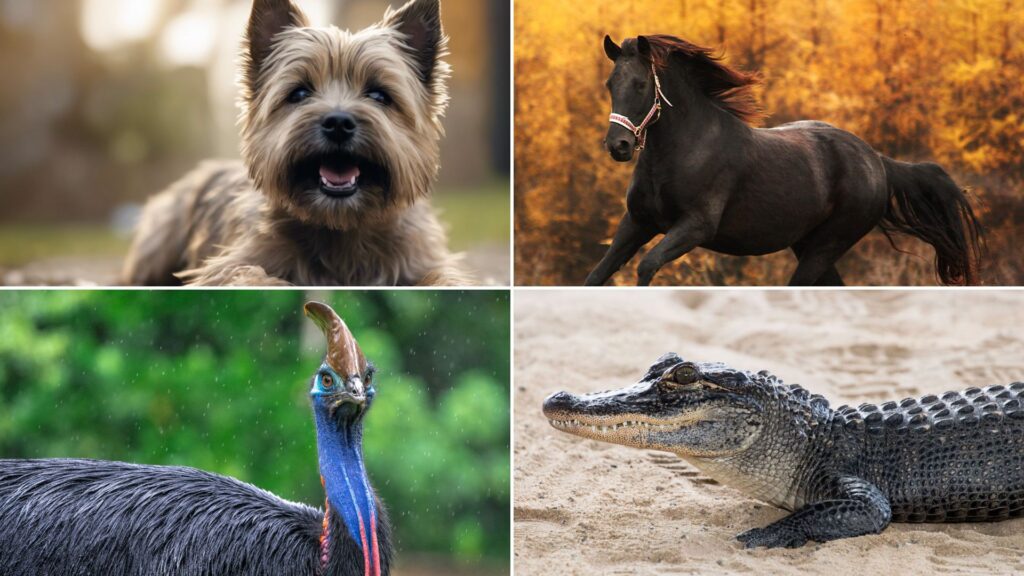Have you ever wondered about the diversity of animals whose names begin with the letter C?
From cuddly companions to fearsome predators, the animal kingdom offers an engaging collection of creatures in this category.
Many people are curious about animals that start with C but often struggle to recall more than a few common examples.
This article will take you on an exciting exploration of 50 animals whose names kick off with this letter, revealing interesting facts and characteristics.
By the end, you’ll have expanded your knowledge of these creatures and gained a new appreciation for the variety of life on our planet.
Ready to learn about some stunning animals that start with C? Let’s begin our adventure through this alphabetical collage.
1. Cabbage Moth
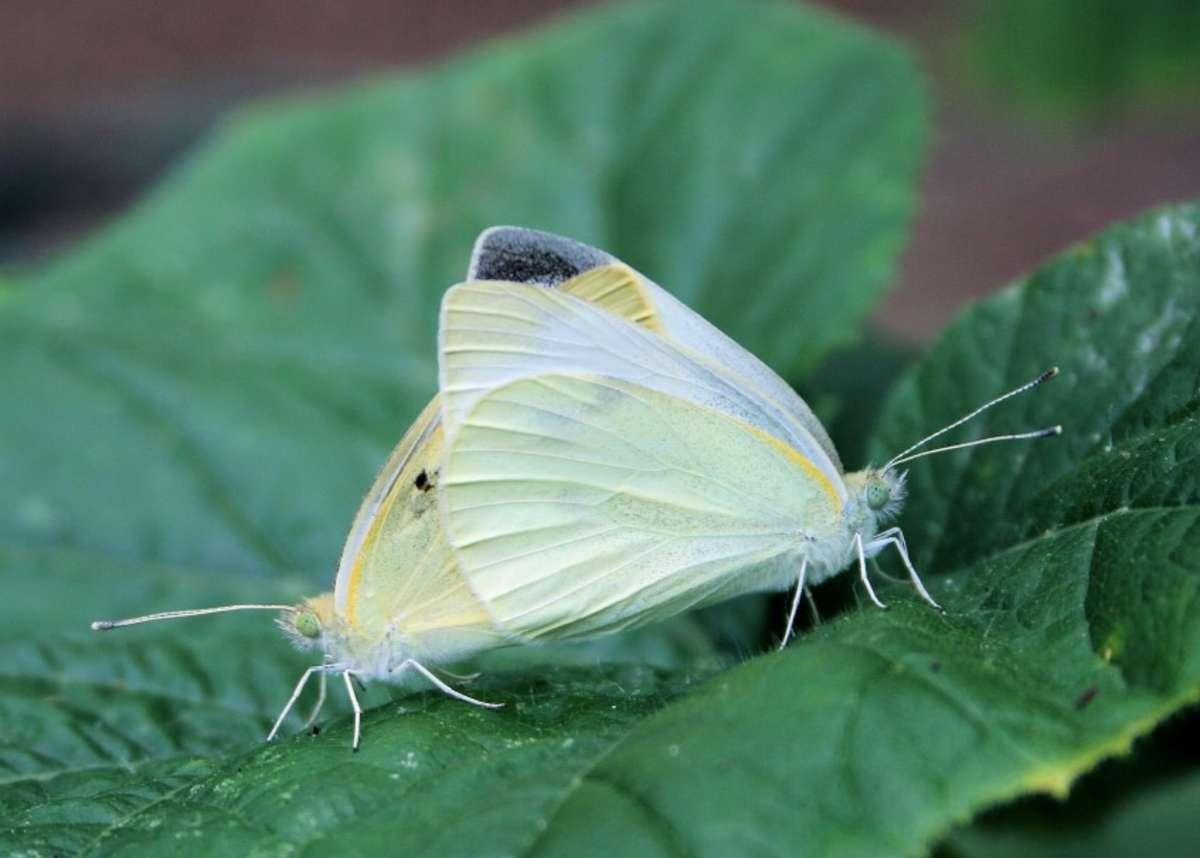
The cabbage moth is a significant pest in vegetable gardens. It is known for targeting and damaging cabbage and related plants.
These moths lay eggs on plant leaves, and once hatched, the larvae feed voraciously, causing considerable harm to crops.
Gardeners often find them a nuisance due to their destructive feeding habits.
- Region of Habitat: Widespread across various continents
- Scientific Name: Mamestra brassicae
- Place of Origin: Europe and Asia
- Feeding Habits: Herbivorous, primarily feeding on cabbage and related plants
- What Sound They Make: Silent
Fun Fact: Named after the vegetable they find tastiest. Their larvae can cause significant damage to crops.
2. Cactus Moth
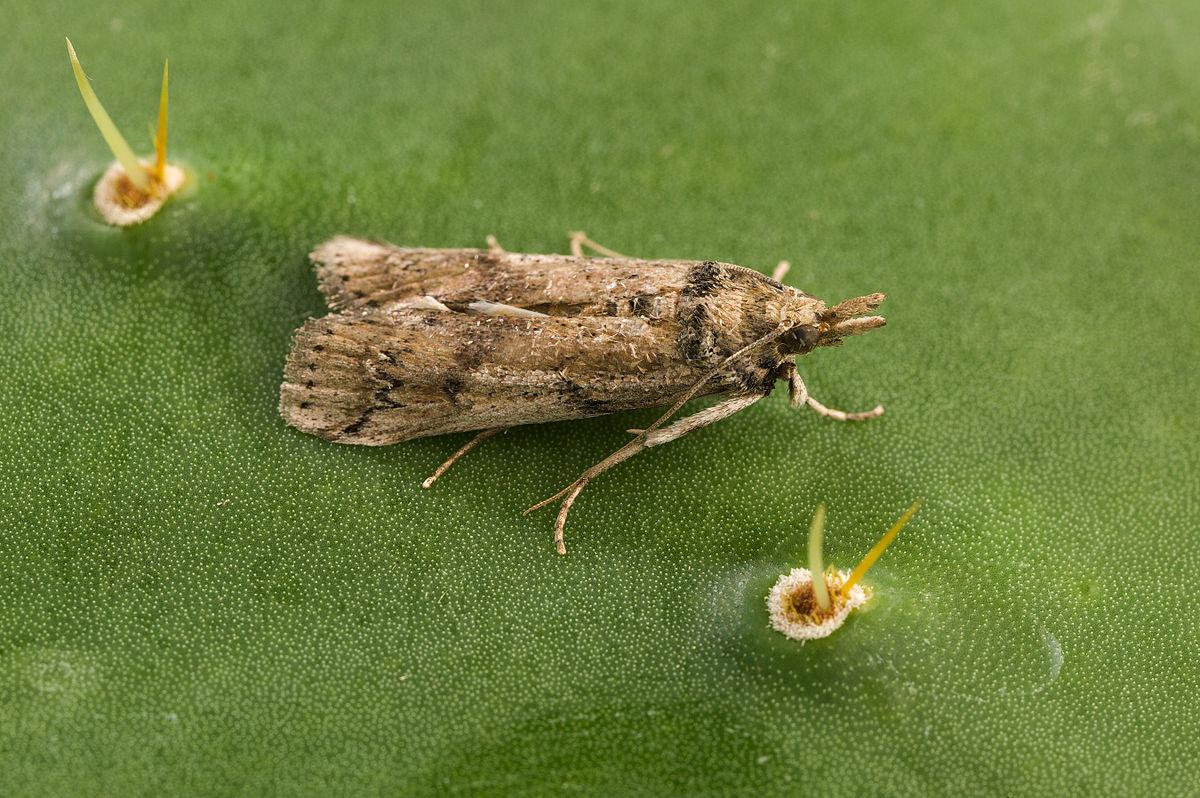
The cactus moth is a species that primarily feeds on cactus plants, particularly prickly pear.
The larvae burrow into the cactus, disrupting water and nutrient flow and often leading to the plant’s death. This has significant ecological impacts in areas where cacti are crucial to the habitat.
- Region of Habitat: South America, introduced to other regions
- Scientific Name: Cactoblastis cactorum
- Place of Origin: South America
- Feeding Habits: Herbivorous, feeding on cactus plants
- What Sound They Make: Silent
Fun Fact: Introduced to control cactus populations, it has become an invasive species in some areas.
3. Cactus Mouse
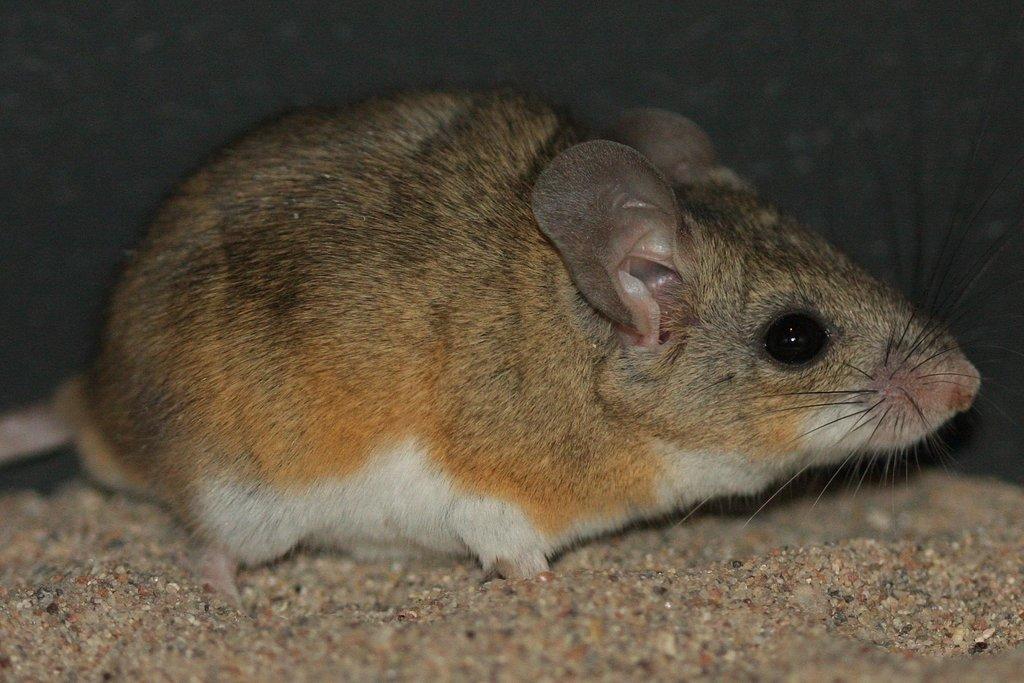
The cactus mouse is a small rodent adapted to arid environments. Its large eyes and ears help it detect predators and find food.
This species is nocturnal and omnivorous, feeding on seeds, insects, and green vegetation.
- Region of Habitat: Southwestern United States and northern Mexico
- Scientific Name: Peromyscus erimicus
- Place of Origin: Southwestern United States and northern Mexico
- Feeding Habits: Omnivorous, feeding on seeds, insects, and green vegetation
- What Sound They Make: High-pitched squeaks
Fun Fact: It can lower its metabolism during hot weather to reduce its water needs, which helps it survive in arid environments.
4. Cactus Wren
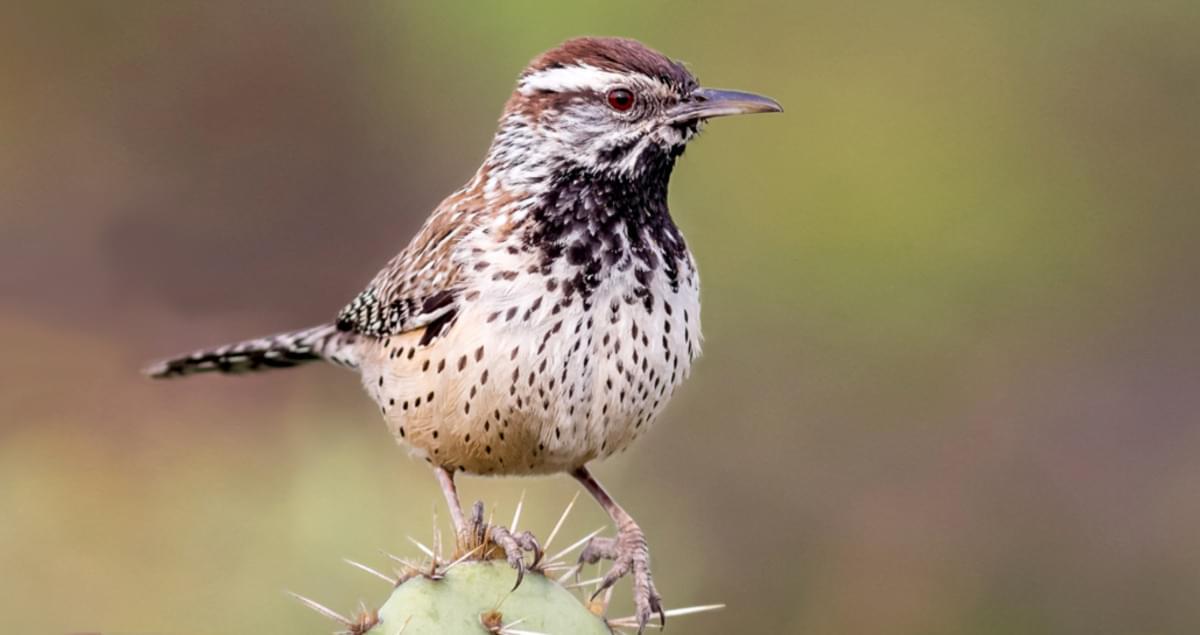
Cactus Wren is known for its distinctive raspy song, which resembles a car engine struggling to start.
These birds are well adapted to desert environments, often seen perched on cacti or hopping on the ground.
- Region of Habitat: Southwestern United States
- Scientific Name: Campylorhynchus brunneicapillus
- Place of Origin: Southwestern United States
- Feeding Habits: Omnivorous, feeding on insects and fruits
- What Sound They Make: Raspy song
Fun Fact: The largest wren species in the United States build large, dome-shaped nests in cacti or thorny shrubs to protect them from predators.
5. Caecilian
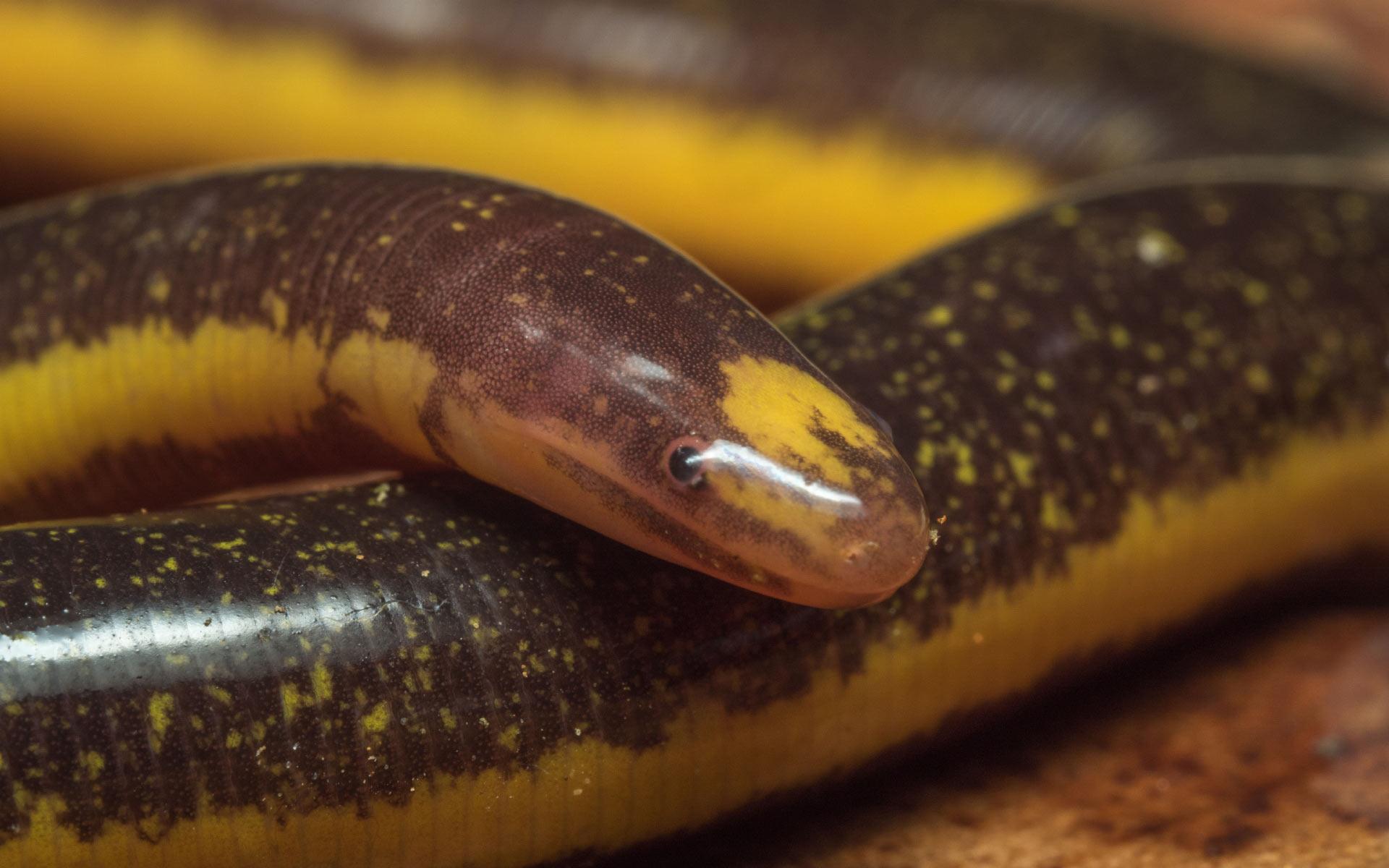
Caecilians are limbless amphibians that resemble earthworms or snakes. They are adapted to a burrowing lifestyle and are often found in moist, tropical regions.
Despite their obscure appearance, caecilians play a vital role in soil health and ventilation by consuming organic matter and small invertebrates.
- Region of Habitat: Wet and tropical areas worldwide
- Scientific Name: Caecilia spp.
- Place of Origin: Worldwide
- Feeding Habits: Carnivorous, feeding on small invertebrates and organic matter
- What Sound They Make: Silent
Fun Fact: Some species’ babies use their hooked teeth to peel off and eat their mother’s skin. This unique behavior helps nourish the young.
6. Caiman

Caimans are crocodilian reptiles found in Central and South America. They inhabit various aquatic environments, including freshwater rivers, swamps, and brackish coastal areas.
Caimans are known for their powerful, agile bodies and sharp teeth, which make them effective hunters.
- Region of Habitat: Central and South America
- Scientific Name: Caiman crocodilus, Melanosuchus niger, Caiman yacare, Paleosuchus palpebrosus, Paleosuchus trigonatus, Caiman latirostris
- Place of Origin: Central and South America
- Feeding Habits: Carnivorous, feeding on fish, birds, and small mammals
- What Sound They Make: Grunts and growls
Fun Fact: They can grow up to 6 meters long, making them one of the larger predators in their habitat. They are known for their powerful, agile bodies and sharp teeth.
7. Caiman Lizard
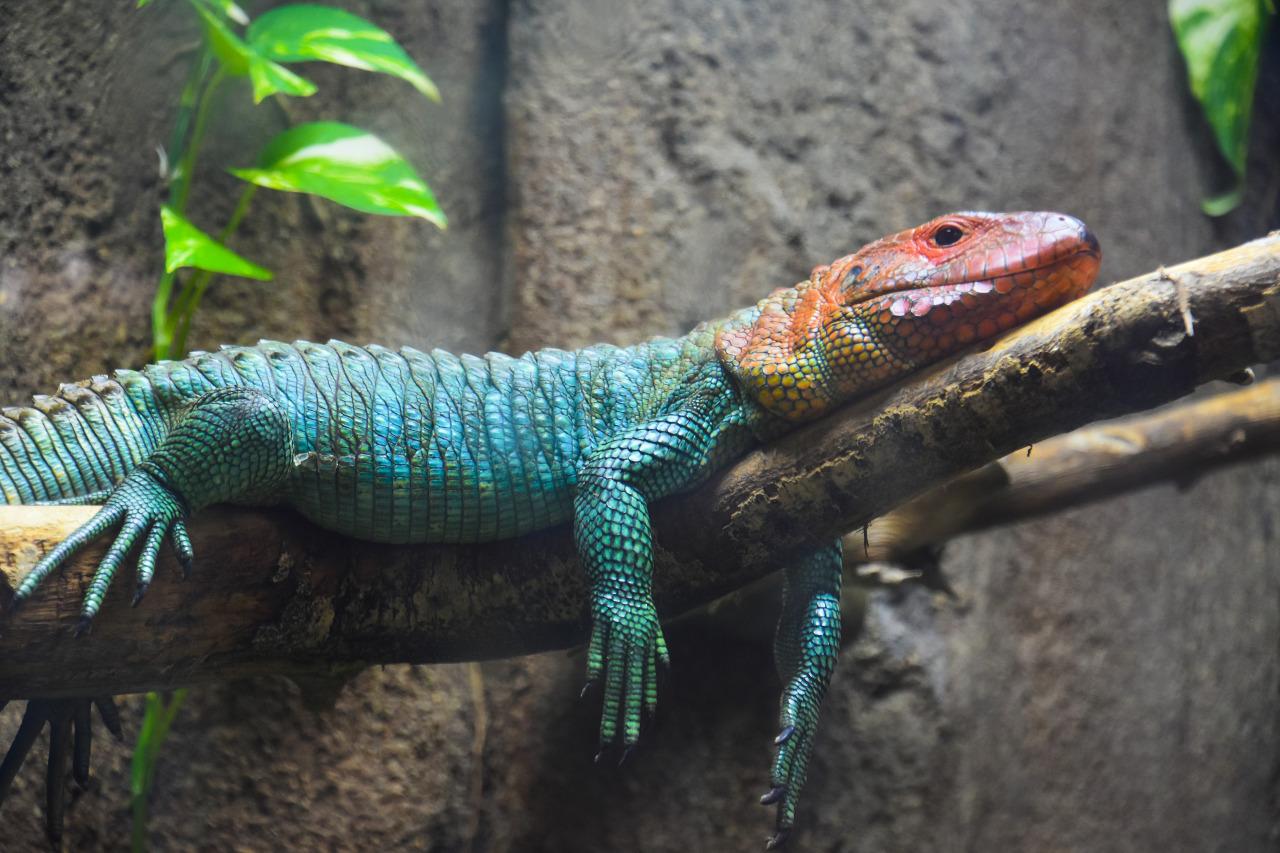
The caiman lizard is a large, semi-aquatic lizard found in South America. It is one of the largest lizard species in the Americas.
Caiman lizards are excellent swimmers and are often found near water bodies. Their vibrant green color and rugged appearance make them a striking species.
- Region of Habitat: South America
- Scientific Name: Dracaena spp.
- Place of Origin: South America
- Feeding Habits: Carnivorous, feeding on snails and hard-shelled prey
- What Sound They Make: Hisses
Fun Fact: Among the largest lizards in the Americas. Their powerful jaws help them crush hard-shelled prey.
8. Cairn Terrier

The Cairn Terrier is a small, lively dog known for its intelligence and strong personality. Originating from Scotland, these dogs were originally bred to hunt and kill vermin.
Their shaggy coats and expressive faces characterize them. Despite their small size, Cairn Terriers are known for their courage and determination, often displaying bold and fearless conduct.
- Region of Habitat: Worldwide as pets
- Scientific Name: Canis lupus familiaris
- Place of Origin: Scotland
- Feeding Habits: Omnivorous, primarily commercial pet food
- What Sound They Make: Barks and growls
Fun Fact: Toto from “The Wizard of Oz” was a Cairn Terrier. Cairn Terriers are known for their bravery.
9. California Condor
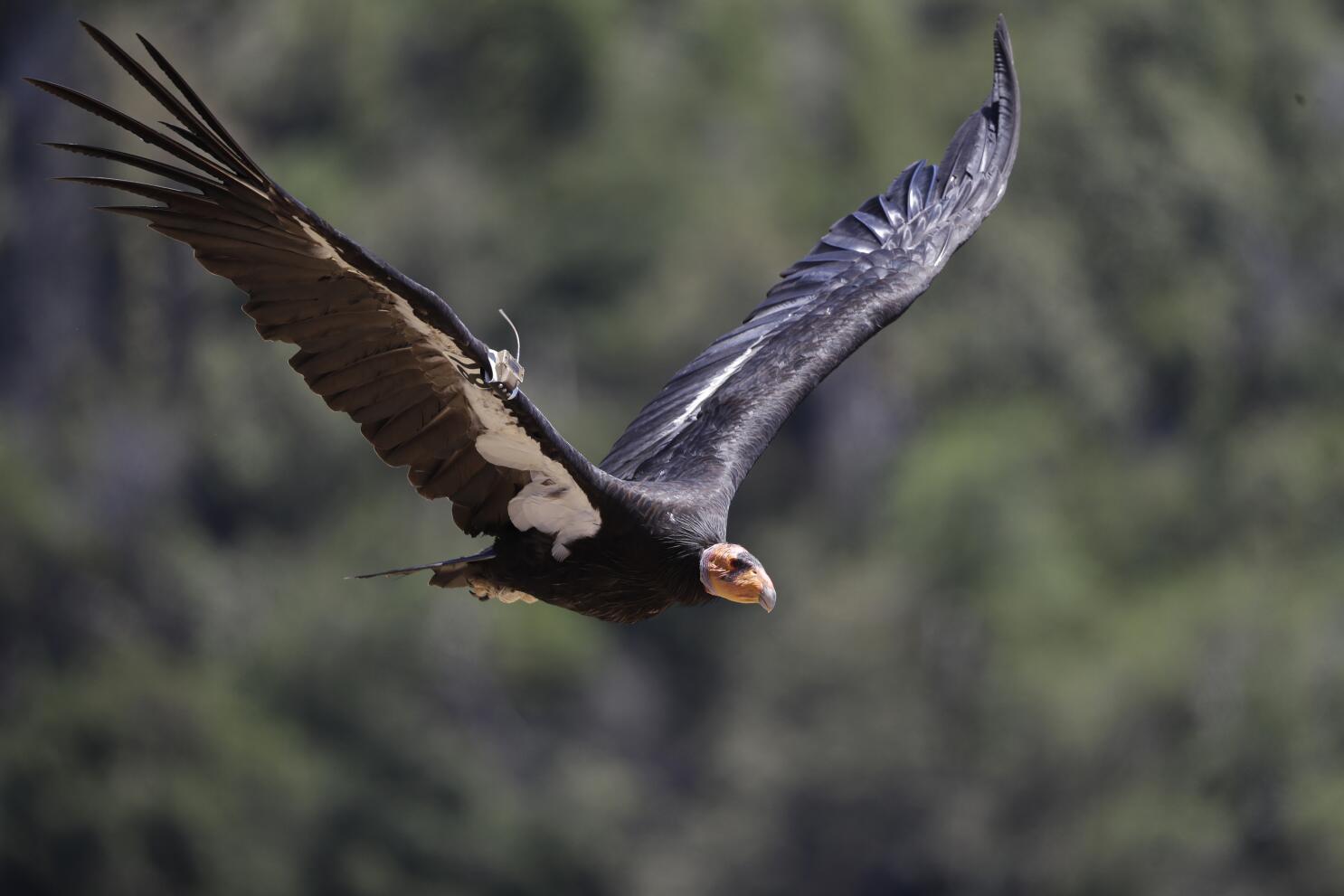
The California Condor is the largest bird in North America, known for its impressive wingspan of up to 9 feet.
These scavengers feed primarily on dead animals’ bodies and play a crucial role in their ecosystem by helping clean up dead animals.
- Region of Habitat: Southwestern United States
- Scientific Name: Gymnogyps californianus
- Place of Origin: Southwestern United States
- Feeding Habits: Scavenger, feeding on carrion
- What Sound They Make: Hisses and grunts
Fun Fact: Critically endangered, with significant conservation efforts underway. Their extremely slow reproduction rate contributes to their vulnerable status.
10. California Kingsnake
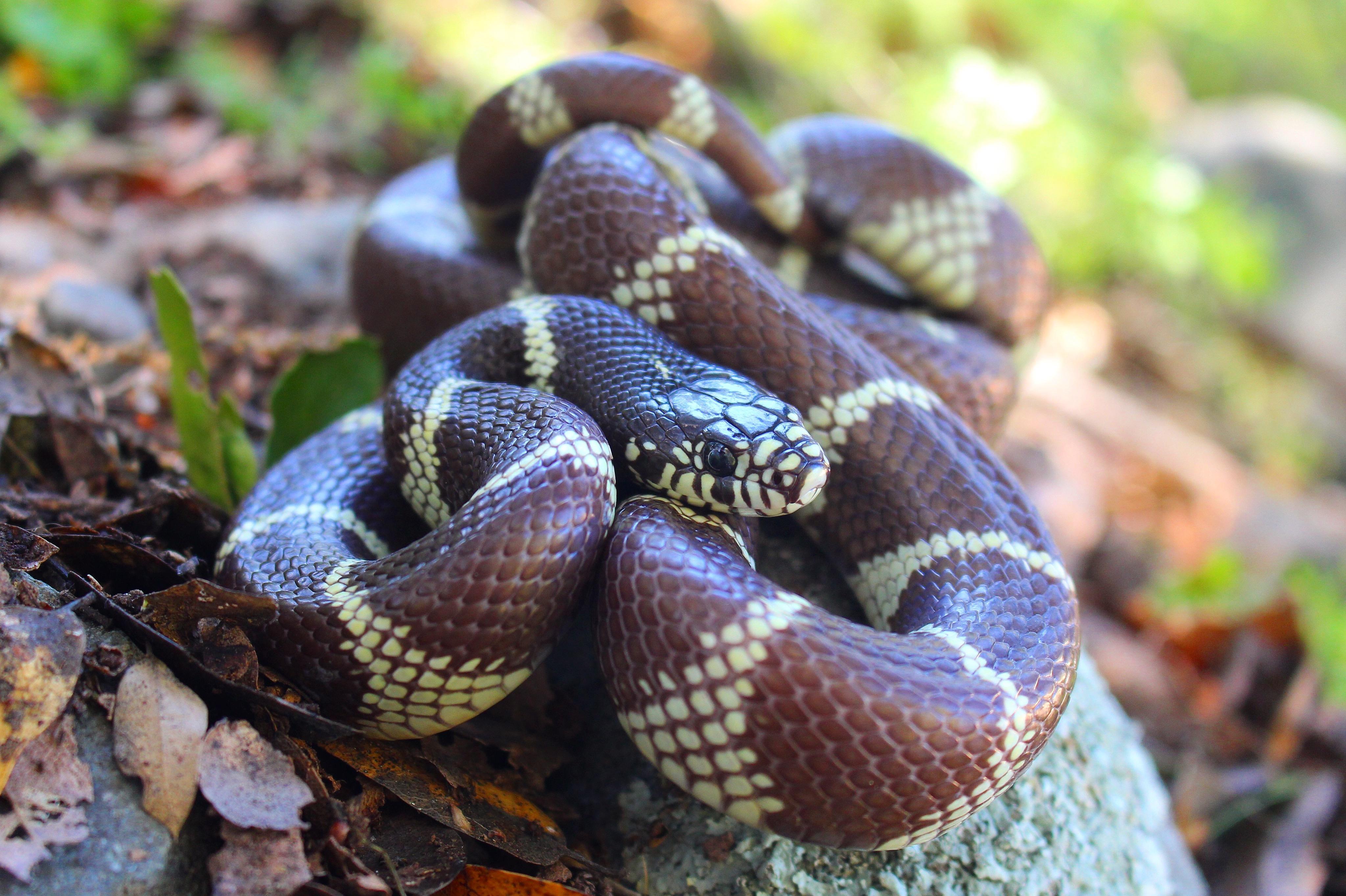
The California Kingsnake is a non-venomous snake found along the west coast of the United States and Mexico. It is known for its striking banded or striped pattern.
This snake is popular for its calm temperament and ease of care. In the wild, it preys on various animals, including other snakes, making it an important part of the ecosystem.
- Region of Habitat: West coast of the United States and Mexico
- Scientific Name: Lampropeltis californiae
- Place of Origin: Western United States
- Feeding Habits: Carnivorous, feeding on rodents, birds, and other reptiles
- What Sound They Make: Silent
Fun Fact: Some specimens in Mexico have been known to be almost twice as long as those in the United States.
11. California Tarantula
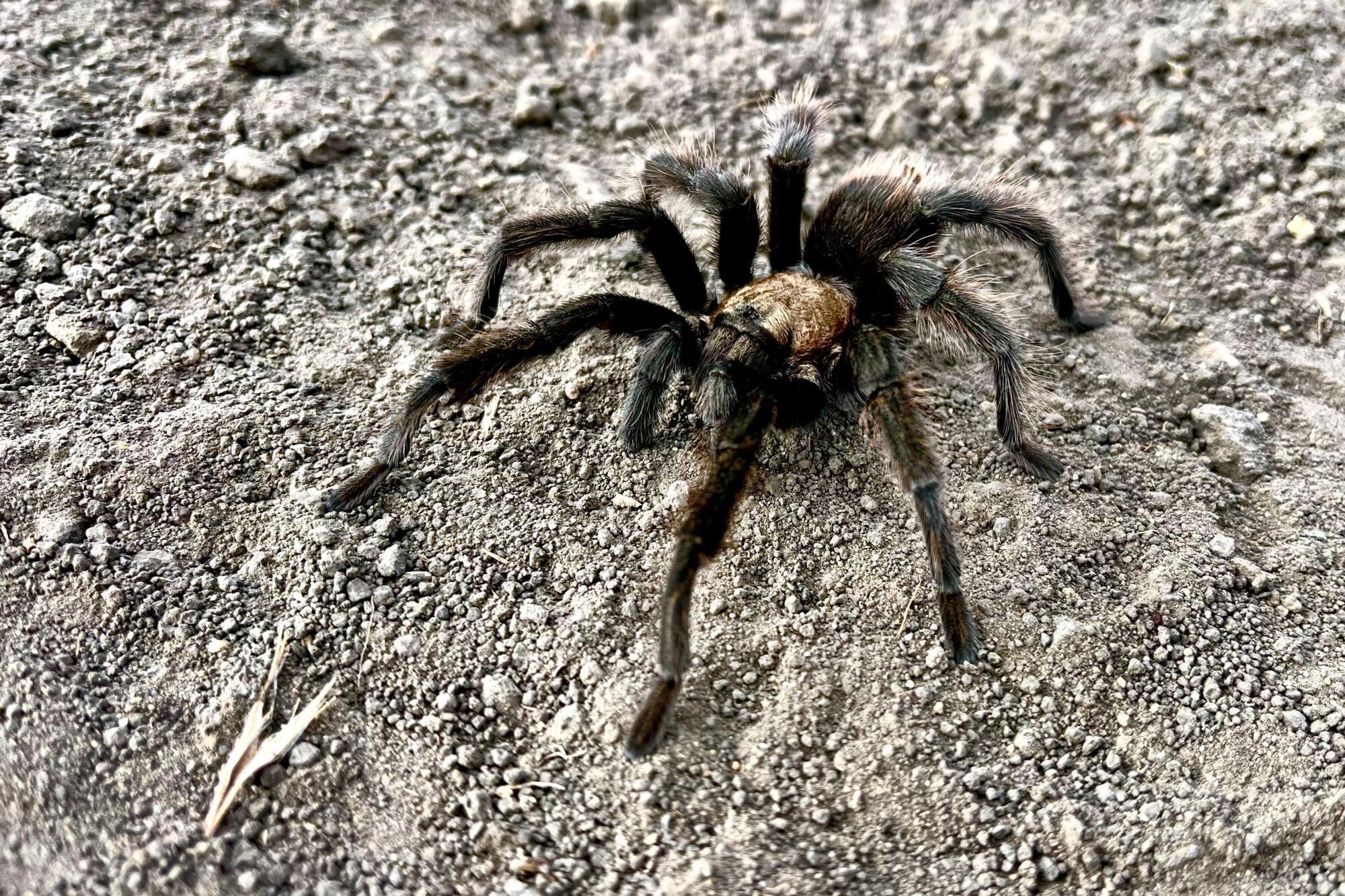
The California Tarantula is a medium-sized spider found in California, Arizona, and Texas. It is known for its brown, hairy body and legs.
These nocturnal spiders hunt insects and small animals. Despite their fearsome appearance, California Tarantulas are relatively docile and are often kept as pets.
- Region of Habitat: California, Arizona, and Texas
- Scientific Name: Aphonopelma californicum
- Place of Origin: Southwestern United States
- Feeding Habits: Carnivorous, feeding on insects and small animals
- What Sound They Make: Silent
Fun Fact: They can go for months without eating. Their strength makes them fascinating pets.
12. Camel
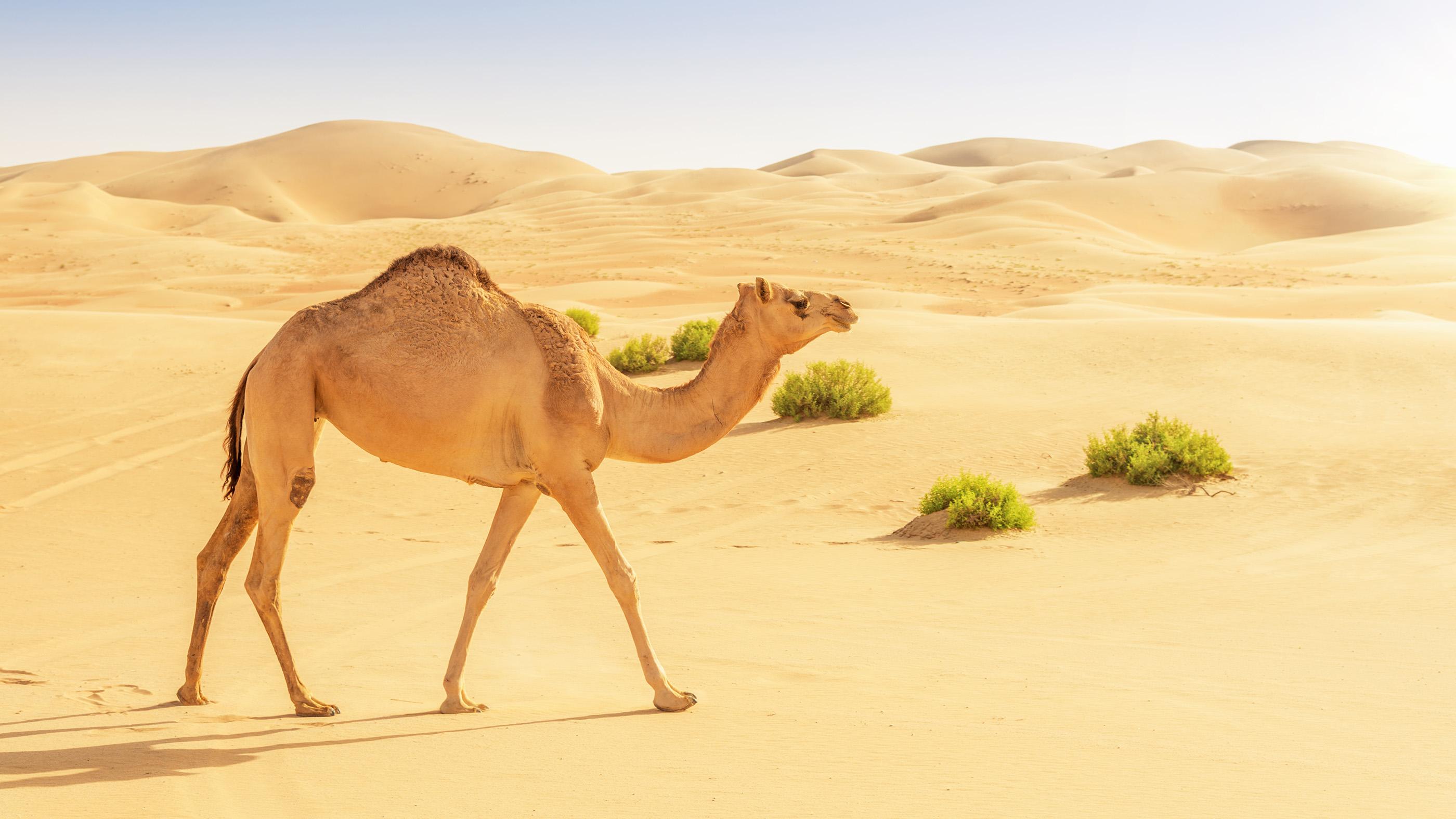
The camel, also known as the dromedary camel or Arabian camel, is a large hoofed animal well-adapted to desert life.
It is known for its distinctive hump, which stores fat that can be used as energy. Camels can survive without water for long periods, making them invaluable for travel and transport in arid regions.
They have been domesticated for thousands of years and are integral to many cultures.
- Region of Habitat: Northern Africa and the Middle East
- Scientific Name: Camelus dromedarius
- Place of Origin: Northern Africa and the Middle East
- Feeding Habits: Herbivorous, feeding on dry grasses and grains
- What Sound They Make: Grunts and moans
Fun Fact: Camels can survive without water for up to 10 months. Their humps store fat, which they use as energy.
13. Camel Cricket
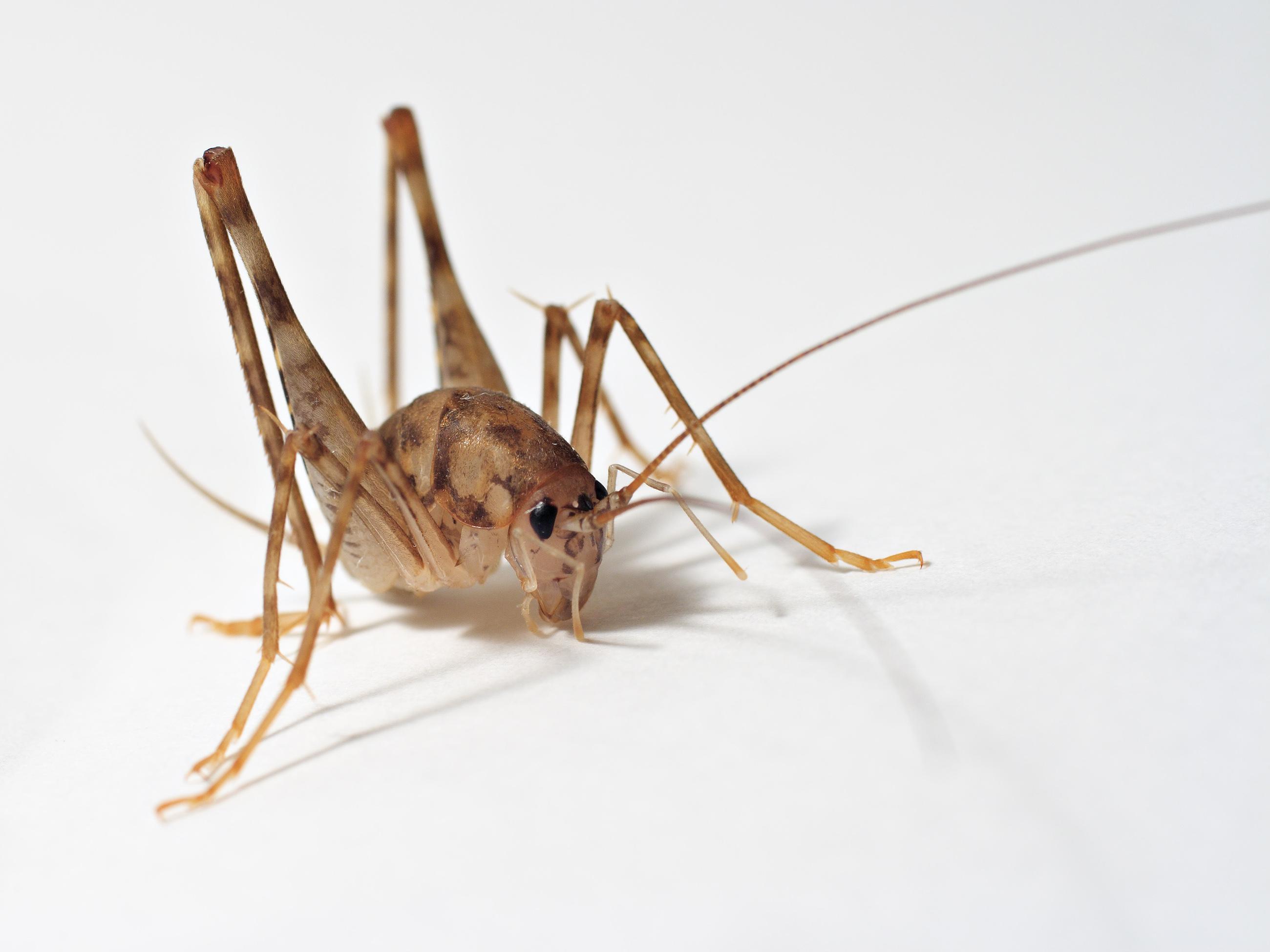
Camel crickets, also known as spider or cave crickets, are insects with a humpback appearance resembling camels.
They are primarily scavengers, feeding on organic material, and can become a disturbance when they invade homes.
- Region of Habitat: Worldwide
- Scientific Name: Rhaphidophoridae family
- Place of Origin: Worldwide
- Feeding Habits: Scavengers, feeding on organic material
- What Sound They Make: Silent
Fun Fact: They do not chirp like other crickets. Their silent presence can be startling in dark places.
14. Camel Spider
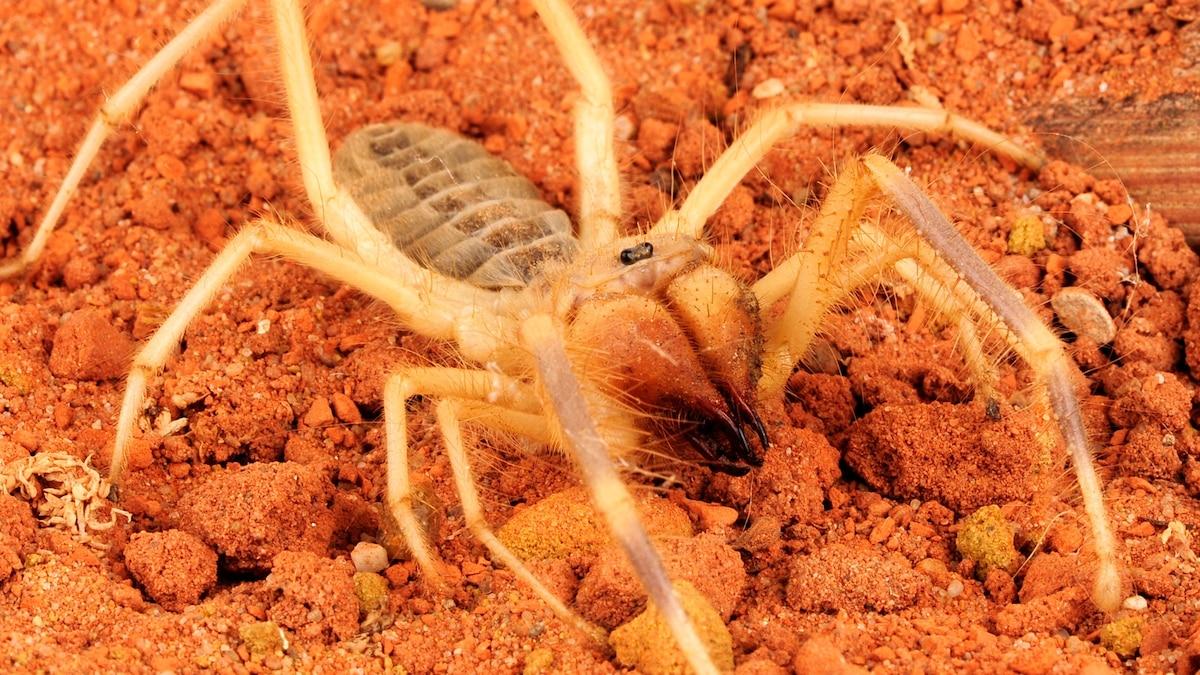
Camel spiders are fast-moving arachnids in dry climates worldwide, including the Middle East, Mexico, and the southwestern United States.
They are known for their large size and carnivorous diet. Despite their name, camel spiders are not true; they belong to solifuges.
Although not venomous, they can move quickly and have a painful bite.
- Region of Habitat: Dry climates worldwide
- Scientific Name: Solpugidae family
- Place of Origin: Worldwide
- Feeding Habits: Carnivorous, feeding on insects and small animals
- What Sound They Make: Silent
Fun Fact: They can move as fast as 10 miles per hour. Their speed and appearance make them formidable hunters.
15. Campine Chicken
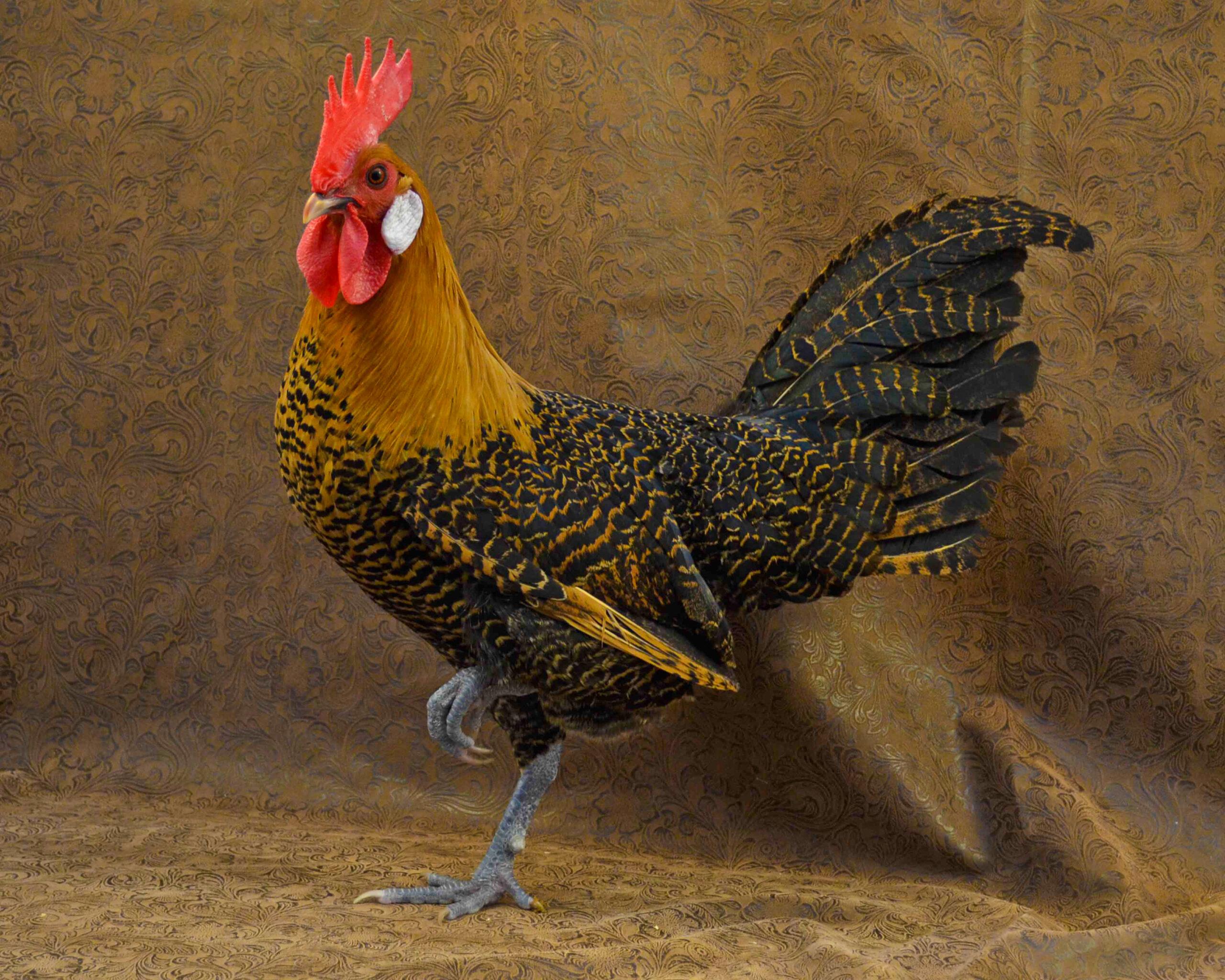
The Campine chicken is an ancient breed from Belgium and the southeastern Netherlands.
These small, slender chickens are known for their excellent egg-laying abilities, producing up to 200 medium-sized white eggs annually.
Campine chickens have a unique appearance and are a mix of white, brown, and orange coloration. They are hardy birds that thrive in various environments.
- Region of Habitat: Belgium and the southeastern Netherlands
- Scientific Name: Gallus gallus domesticus
- Place of Origin: Belgium and the southeastern Netherlands
- Feeding Habits: Omnivorous, feeding on grains and insects
- What Sound They Make: Clucks and crows
Fun Fact: Julius Caesar exported campine chickens from Belgium. They are known for their excellent egg-laying abilities.
16. Canaan Dog

The Canaan dog is a rare desert breed native to the Arabian Peninsula. It is recognized as Israel’s national dog.
It is one of the oldest known human breeds, characterized by erect ears, a wedge-shaped head, and a bushy tail.
- Region of Habitat: Arabian Peninsula
- Scientific Name: Canis lupus familiaris
- Place of Origin: Arabian Peninsula
- Feeding Habits: Omnivorous, primarily commercial pet food
- What Sound They Make: Barks and howls
Fun Fact: The Canaan dog has a strong survival instinct, making it excellent for herding and guarding.
17. Canada Lynx
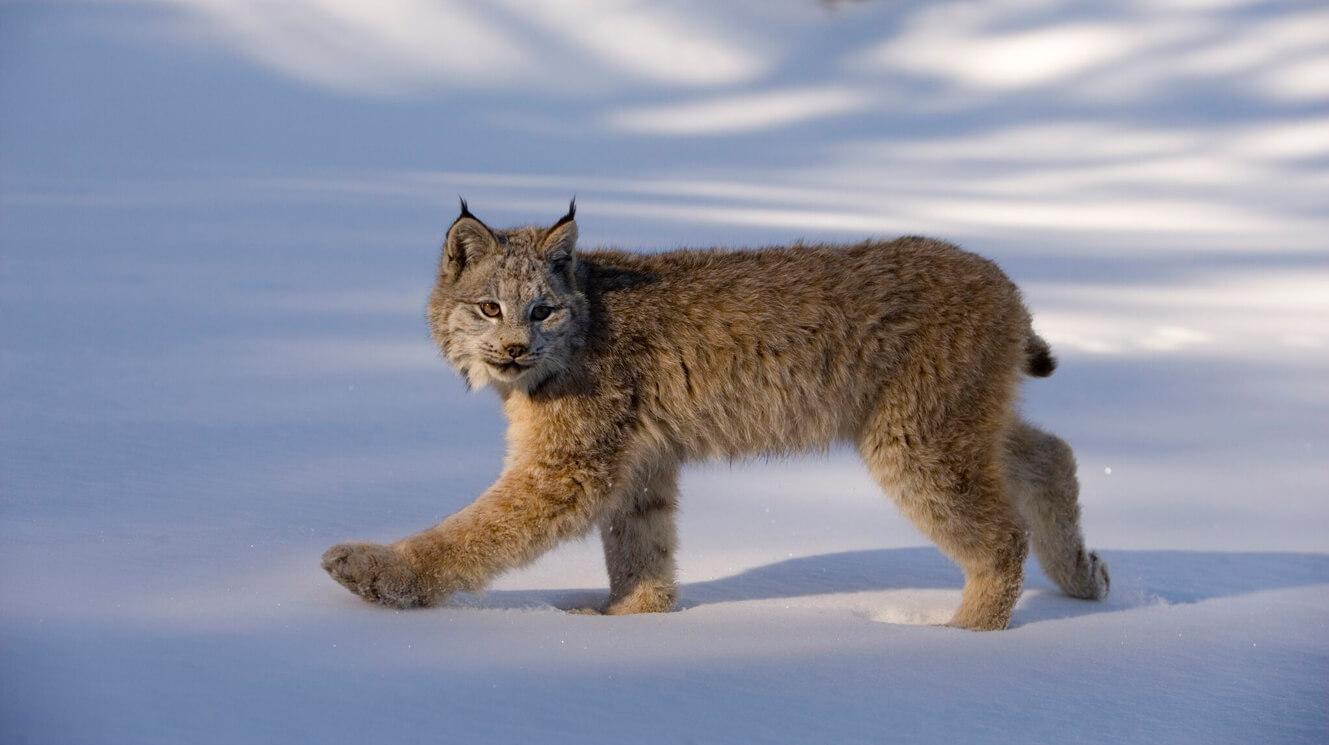
The Canada Lynx is a medium-sized wild cat known for its tufted ears and thick fur, which helps it survive in cold environments.
The Canada Lynx is well adapted to forested areas and is an excellent climber, often perched in trees.
- Region of Habitat: Canada and the northern United States
- Scientific Name: Lynx canadensis
- Place of Origin: Canada and Northern United States
- Feeding Habits: Carnivorous, feeding on snowshoe hares and other small mammals
- What Sound They Make: Meows, growls, and purrs
Fun Fact: They have natural snowshoes with large, furry paws that help them walk on snow.
18. Canada Warbler
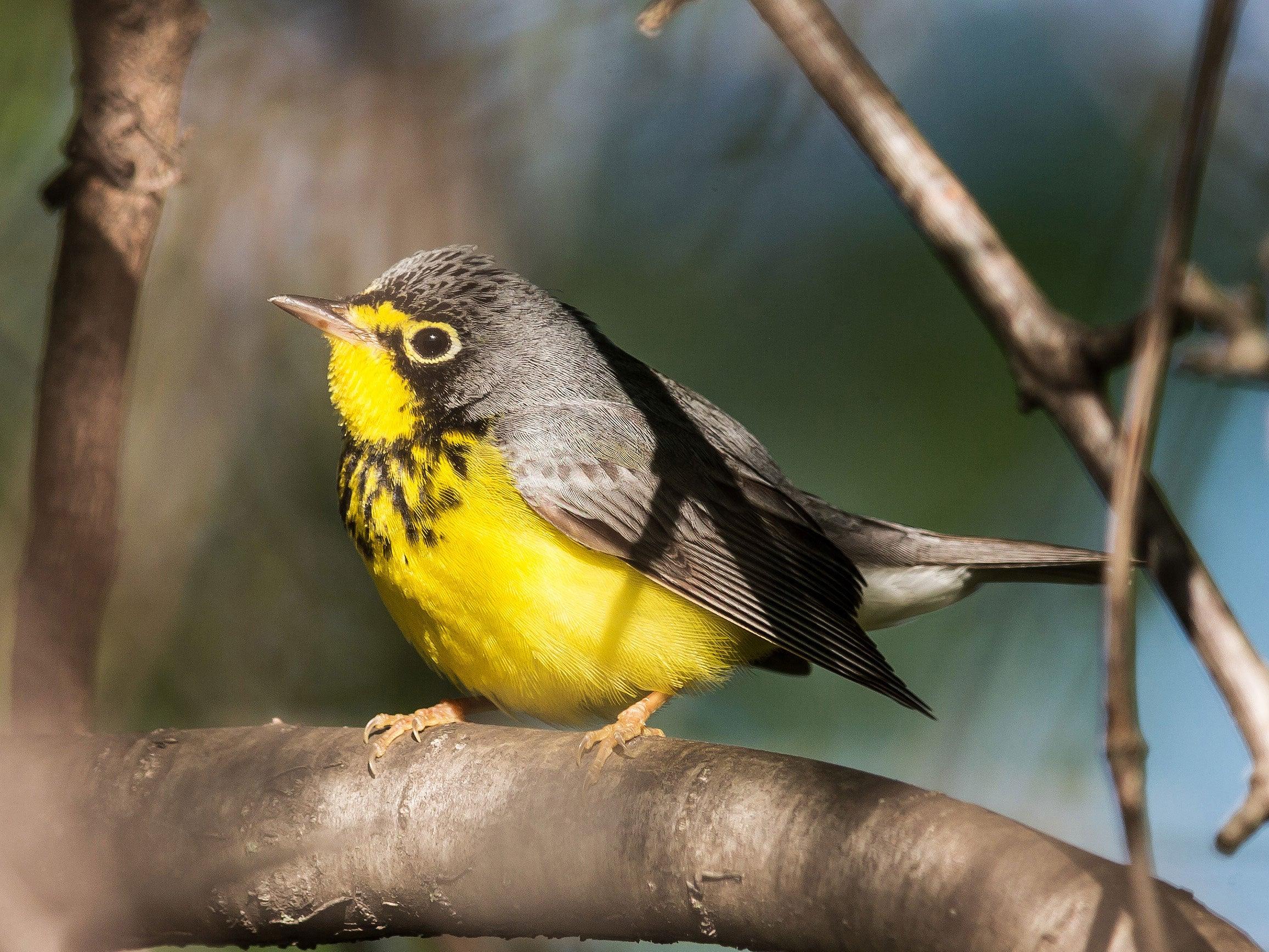
The Canada Warbler is a small, brightly colored songbird known for its yellow feathers and distinctive black necklace.
These birds are insectivores, feeding on mosquitoes, flies, and caterpillars. They are known for their cheerful, trilling songs.
- Region of Habitat: North America
- Scientific Name: Cardellina canadensis
- Place of Origin: North America
- Feeding Habits: Insectivorous, feeding on mosquitoes, flies, and caterpillars
- What Sound They Make: Cheerful, trilling songs
Fun Fact: These birds travel more than 3,000 miles during migration. Their long journeys are a marvel of endurance.
19. Canadian Eskimo Dog
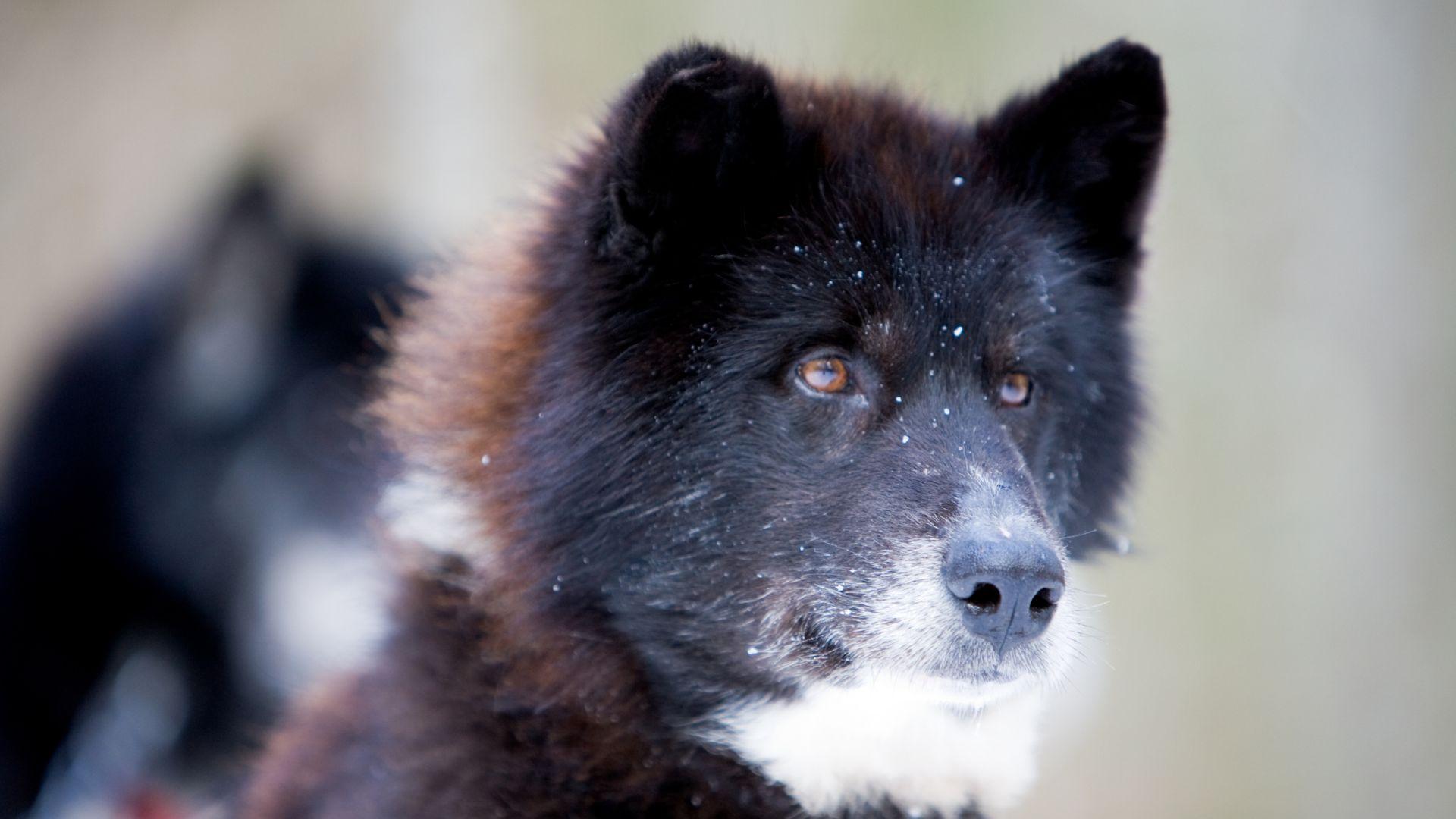
The Canadian Eskimo Dog is an ancient breed from the Canadian Arctic region. It was traditionally used as a sled dog and is known for its exceptional energy and stamina.
They are hardworking and resilient, capable of enduring harsh Arctic conditions.
Despite their strength, they are gentle and loyal companions.
- Region of Habitat: Canadian Arctic regions
- Scientific Name: Canis lupus familiaris
- Place of Origin: Canadian Arctic
- Feeding Habits: Omnivorous, primarily commercial pet food
- What Sound They Make: Barks and howls
Fun Fact: Known for their exceptional energy and stamina, they are invaluable for Arctic travel.
20. Canadian Horse
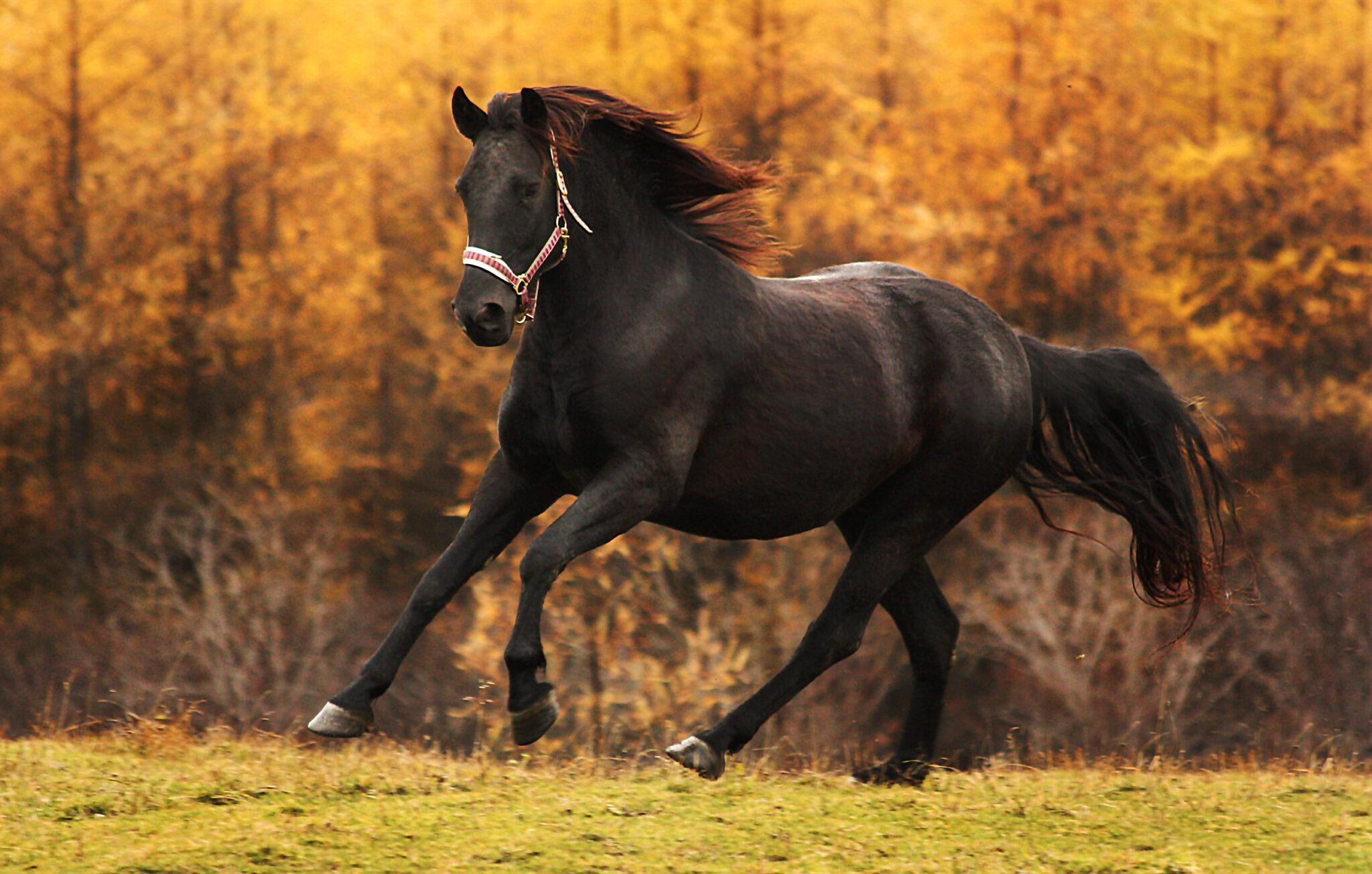
The Canadian Horse is a strong and versatile breed believed to generate more power per pound of body weight than any other horse.
It was first imported to Canada from France in the 17th century and has been used for various purposes, including farming and transportation.
Canadian Horses are known for their strength, endurance, and gentle temperament.
- Region of Habitat: Canada
- Scientific Name: Equus ferus caballus
- Place of Origin: Canada
- Feeding Habits: Herbivorous, feeding on grasses and hay
- What Sound They Make: Neighs and whinnies
Fun Fact: It is believed to generate more power per pound of body weight than any other horse breed. Their strength and endurance are legendary.
21. Cane Corso
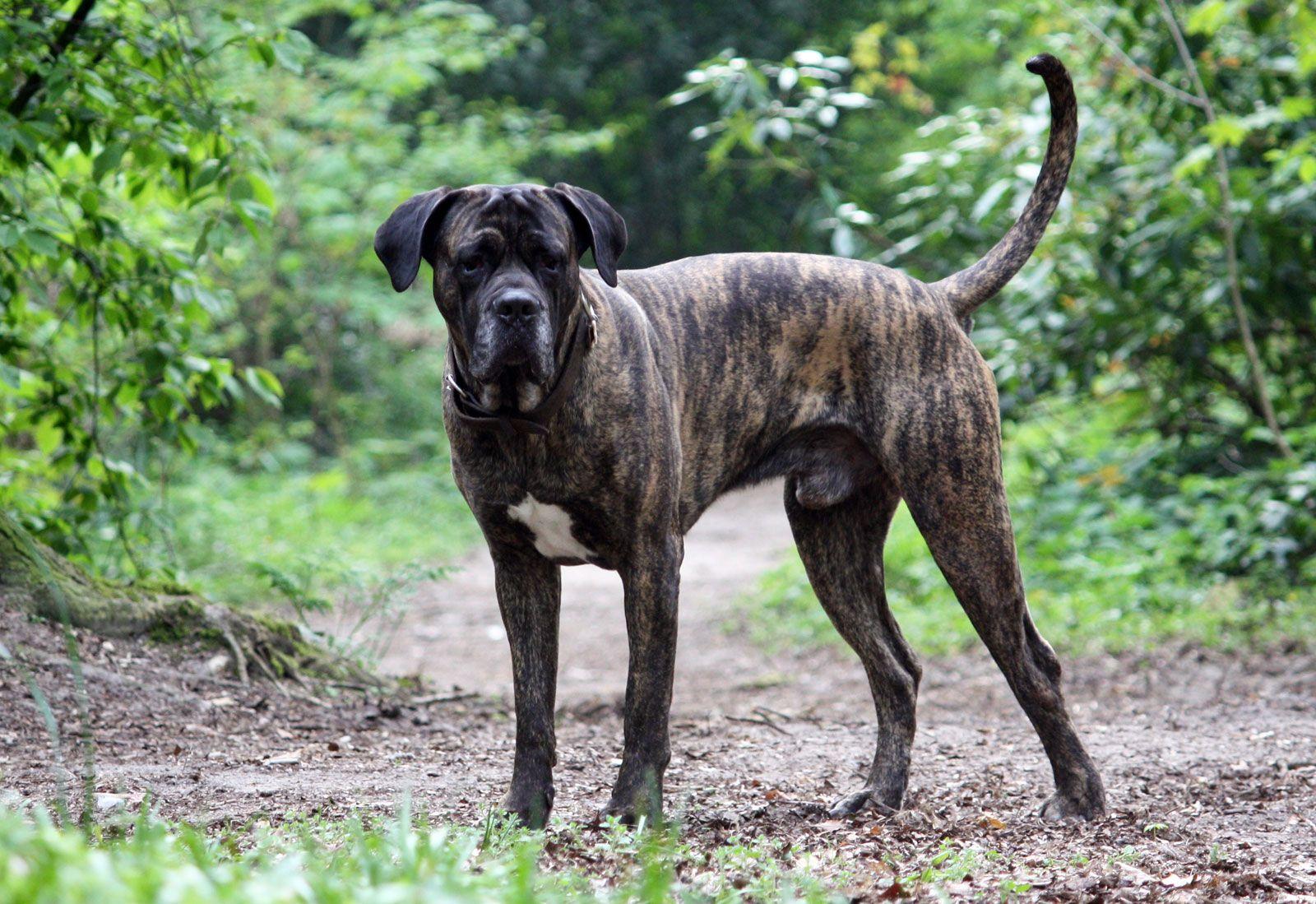
The Cane Corso is a large, muscular dog breed from Italy, known for its protective and loyal nature.
These dogs were historically used as guard dogs and for hunting large game. The Cane Corso is intelligent and trainable, making it a popular choice for families seeking a protective companion.
Despite their imposing appearance, they are affectionate and gentle with their families.
- Region of Habitat: Italy
- Scientific Name: Canis lupus familiaris
- Place of Origin: Italy
- Feeding Habits: Omnivorous, primarily commercial pet food
- What Sound They Make: Barks and growls
Fun Fact: The breed nearly became extinct in the mid-1900s, but a group of Italians revived it. Their history is a testament to resilience.
22. Cane Rat
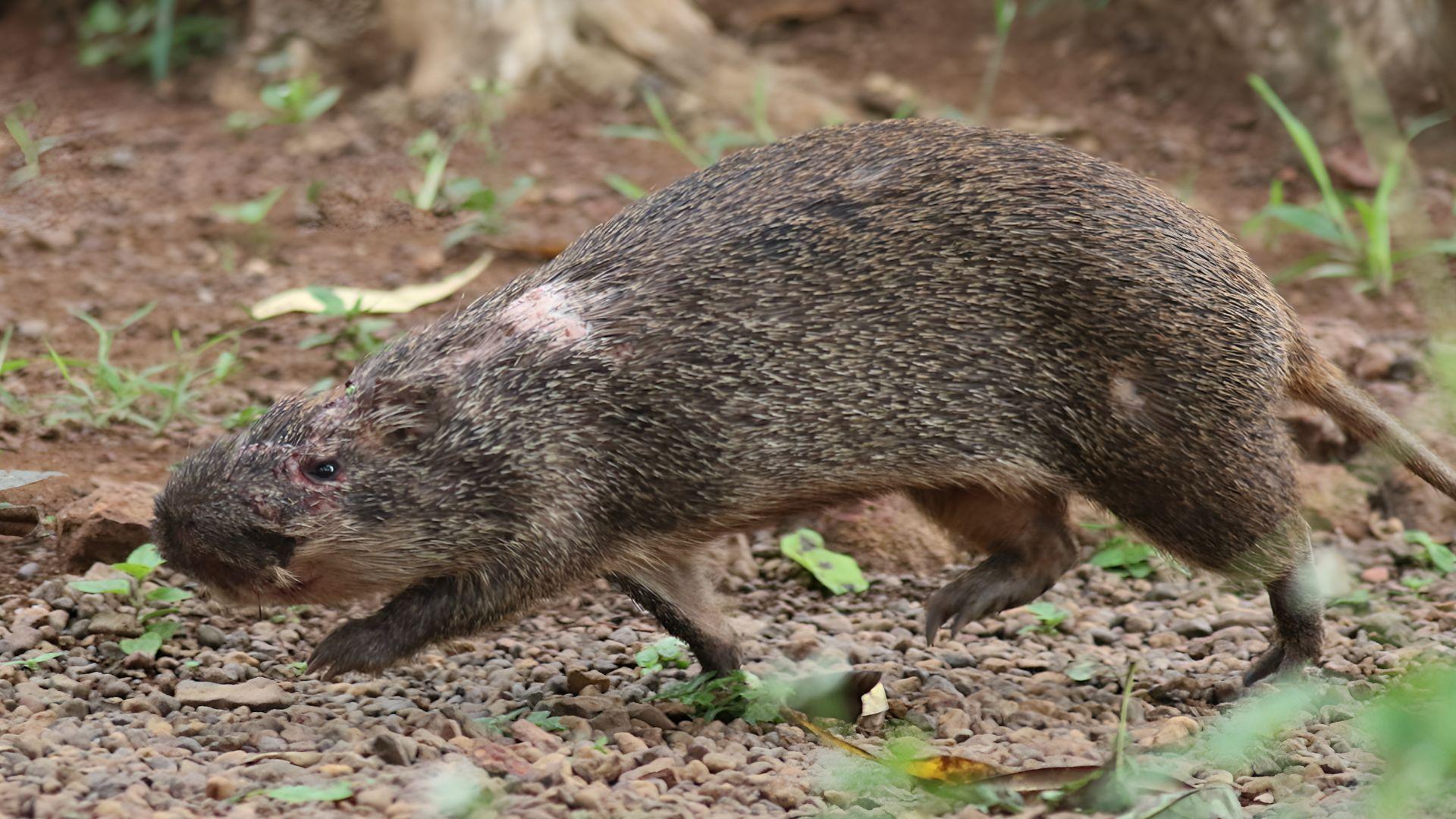
The cane rat, the grasscutter, is a large rodent in sub-Saharan Africa. These rodents are often considered pests because they tend to feed on crops.
They are also a source of bushmeat in some regions. Cane rats have a robust build and can weigh up to 22 pounds, making them one of the largest rodent species.
- Region of Habitat: Sub-Saharan Africa
- Scientific Name: Thryonomys spp.
- Place of Origin: Sub-Saharan Africa
- Feeding Habits: Herbivorous, feeding on grasses and crops
- What Sound They Make: Grunts and squeaks
Fun Fact: Often eaten as bushmeat or raised as livestock. Their role in local economies is significant.
23. Cane Spider
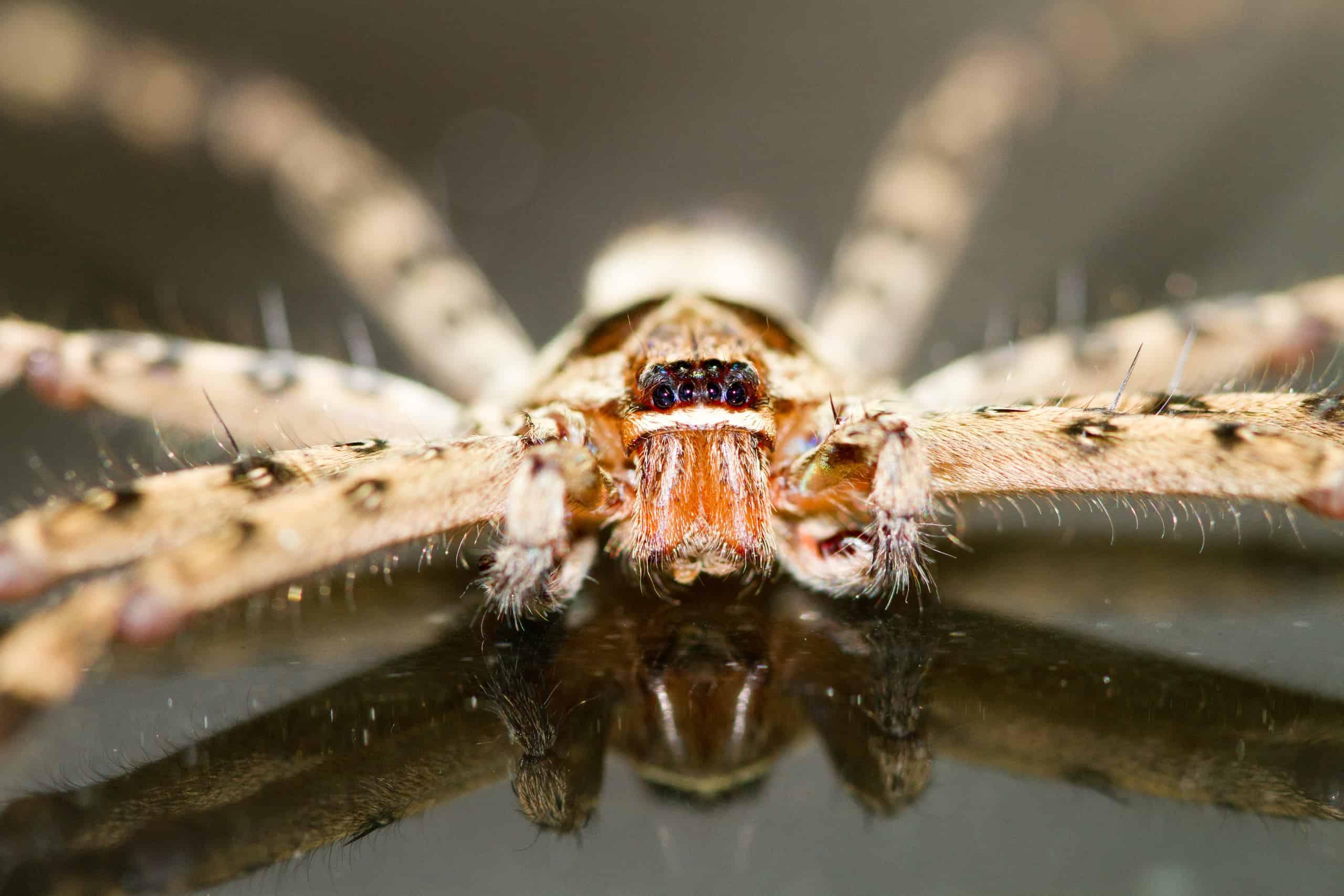
The cane spider is a large, fast-moving arachnid native to Hawaii and other tropical regions. Unlike many spiders, it does not spin webs to catch its prey.
Instead, they hunt by patiently waiting and then jumping on unsuspecting insects. Despite their size and appearance, cane spiders are not venomous and pose no threat to humans.
- Region of Habitat: Tropical areas
- Scientific Name: Heteropoda venatoria
- Place of Origin: Hawaii and other tropical regions
- Feeding Habits: Carnivorous, hunting insects
- What Sound They Make: Silent
Fun Fact: They do not spin webs to catch prey. Their hunting technique is fascinating to observe.
24. Cantil
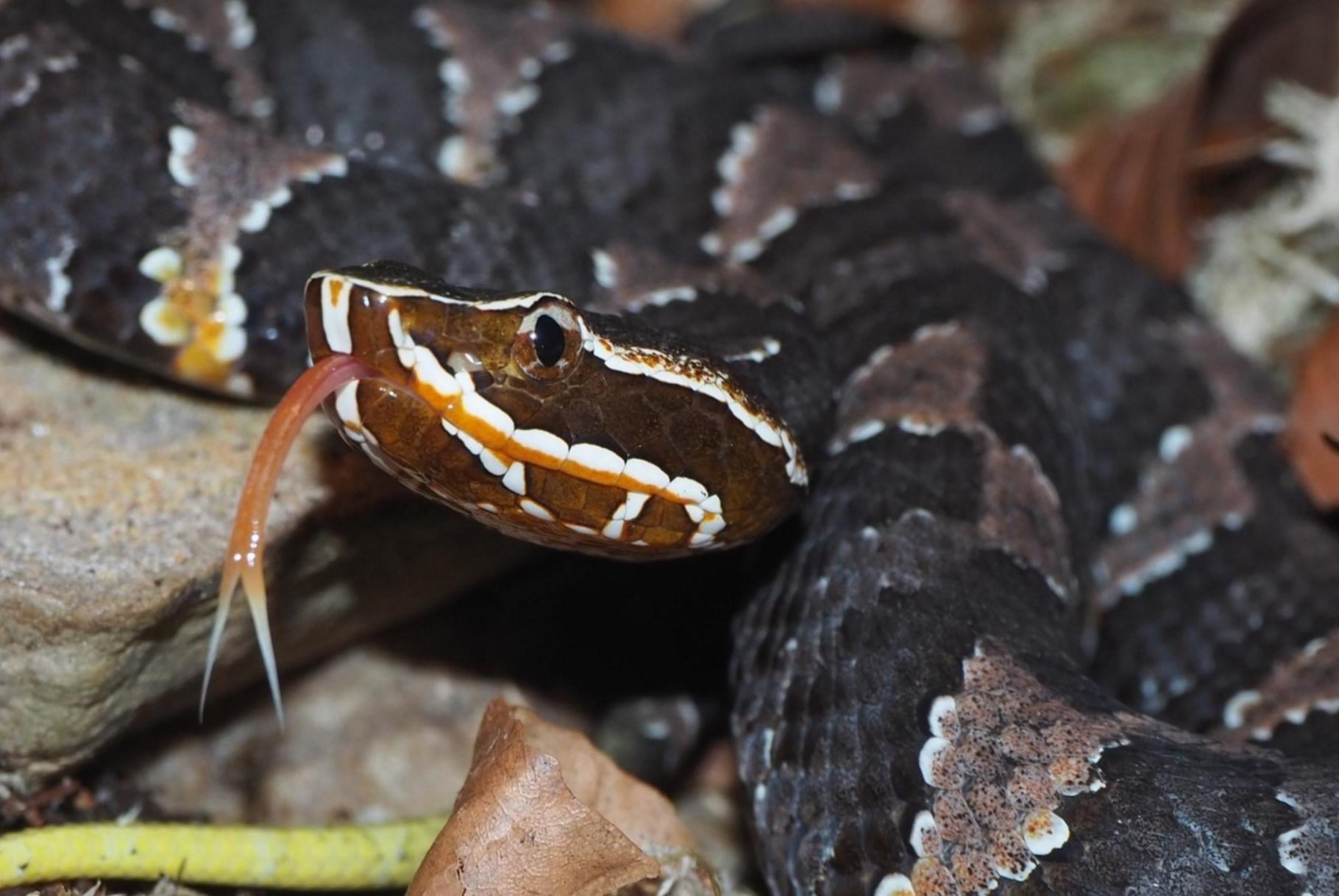
The cantil is a venomous pit viper found in Mexico and Central America. It is closely related to the cottonmouth and copperhead snakes.
Cantils are well-camouflaged and prefer to live in wet, forested areas. They are known for their potent venom, which they use to subdue prey.
Despite their fearsome reputation, cantils are reclusive and avoid humans when possible.
- Region of Habitat: Mexico and Central America
- Scientific Name: Agkistrodon spp.
- Place of Origin: Mexico and Central America
- Feeding Habits: Carnivorous, feeding on small mammals and reptiles
- What Sound They Make: Hisses
Fun Fact: Their heads are marked with bright white lines, which serve as a warning to potential predators.
25. Canvasback
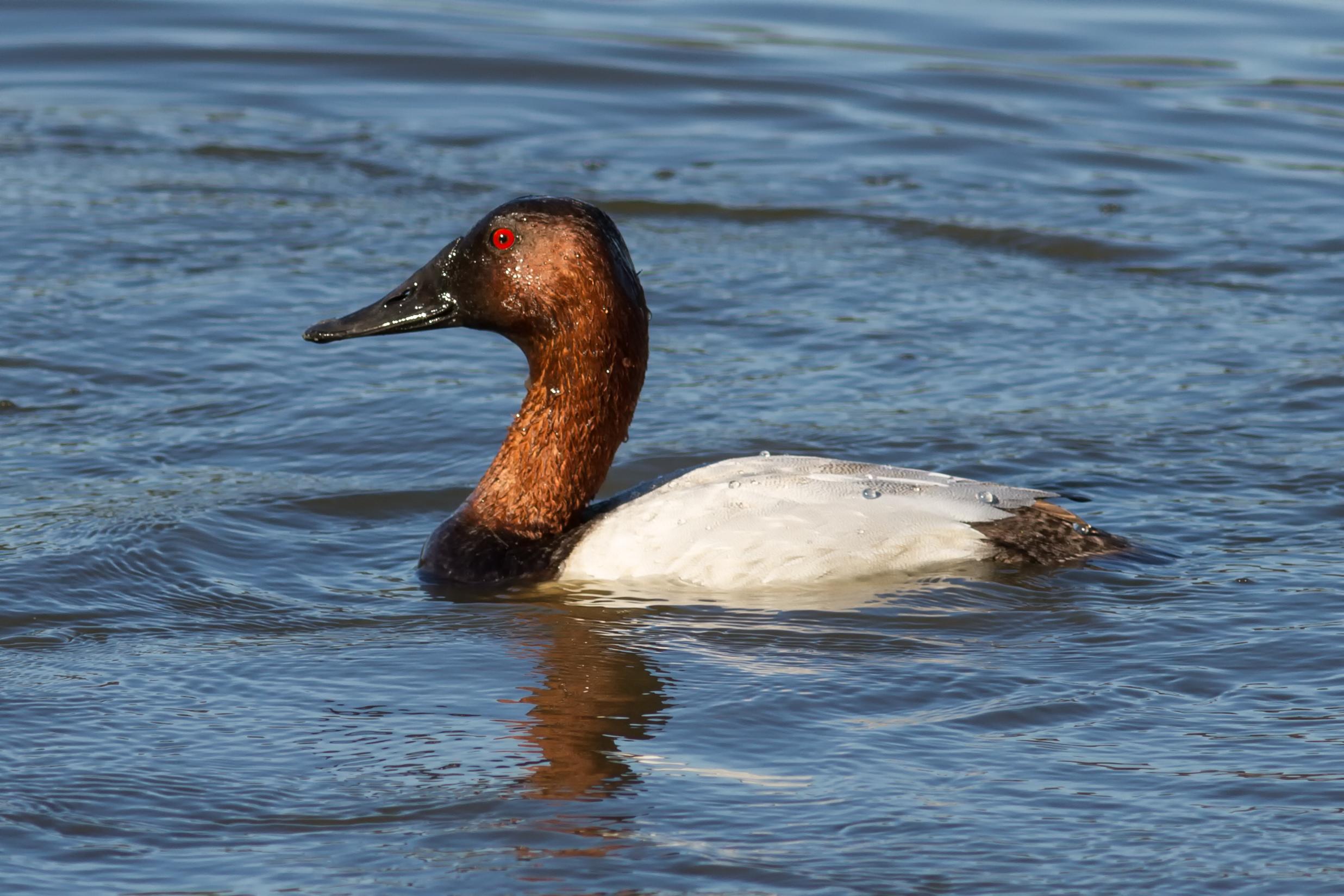
Canvasback is a species of diving duck found across North America. It is known for its distinctive wedge-shaped head and sloping bill.
Canvasbacks prefer freshwater lakes and rivers, where they plunge to feed on aquatic plants and invertebrates. They are strong swimmers and are often seen in large flocks during migration.
- Region of Habitat: North America
- Scientific Name: Aythya valisineria
- Place of Origin: North America
- Feeding Habits: Omnivorous, feeding on aquatic plants and invertebrates
- What Sound They Make: Quacks and whistles
Fun Fact: The largest diving duck in North America. Their diving skills are impressive.
26. Cape Lion
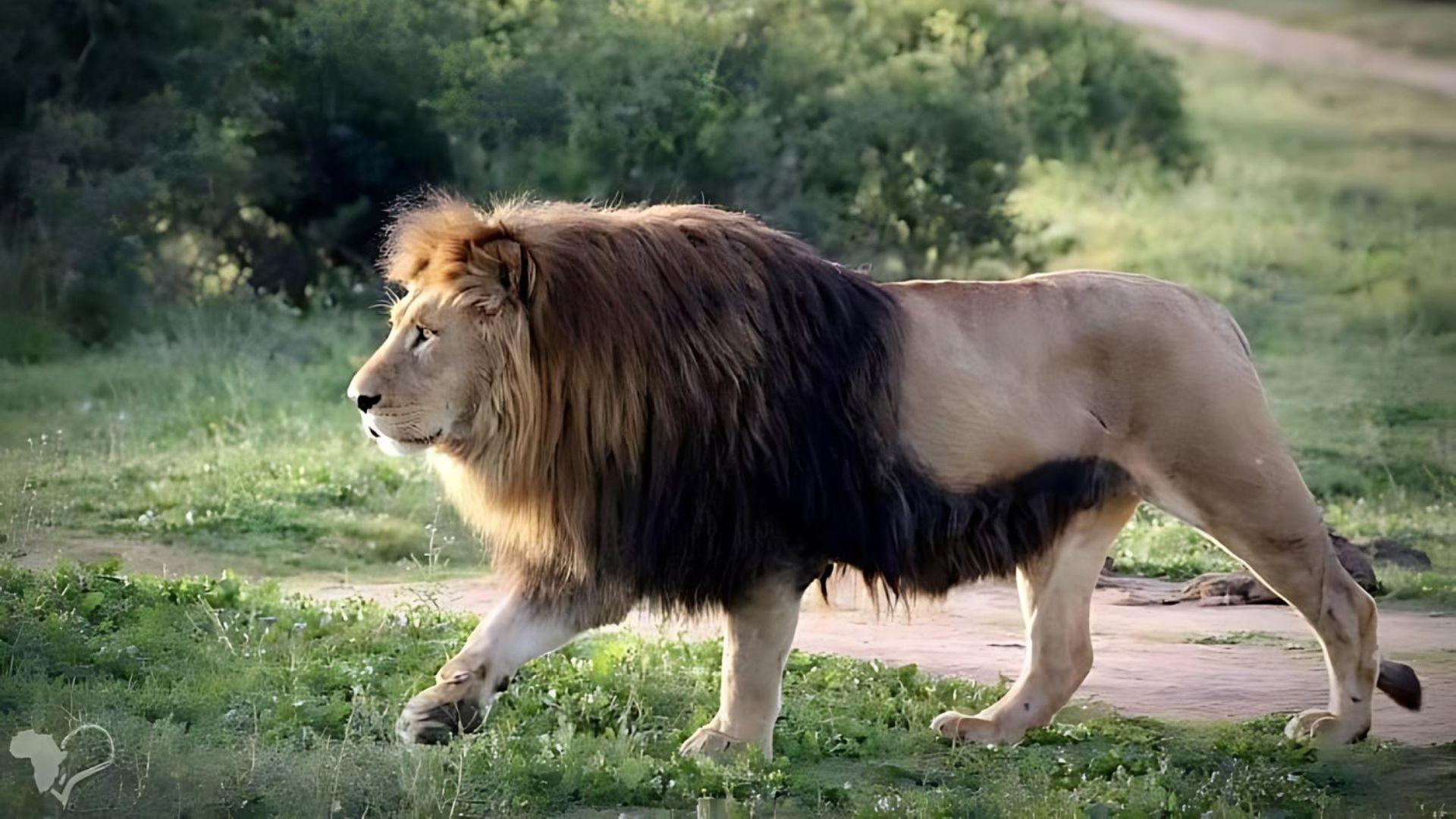
The Cape lion is a subspecies of lions once native to the southern Cape region of Africa.
Recognizable by its black-maned appearance, it was known for its large, muscular body.
Unfortunately, this subspecies was driven to extinction in the 19th century due to excessive hunting and habitat loss. Cape lions were one of the largest and most majestic lion subspecies.
- Region of Habitat: Extinct, formerly in the southern Cape region of Africa
- Scientific Name: Panthera leo melanochaitus
- Place of Origin: Southern Cape region of Africa
- Feeding Habits: Carnivorous, feeding on large mammals
- What Sound They Make: Roars
Fun Fact: Despite its large body, the Cape lion rested more than 20 hours daily. Their majestic presence was breathtaking
27. Capuchin
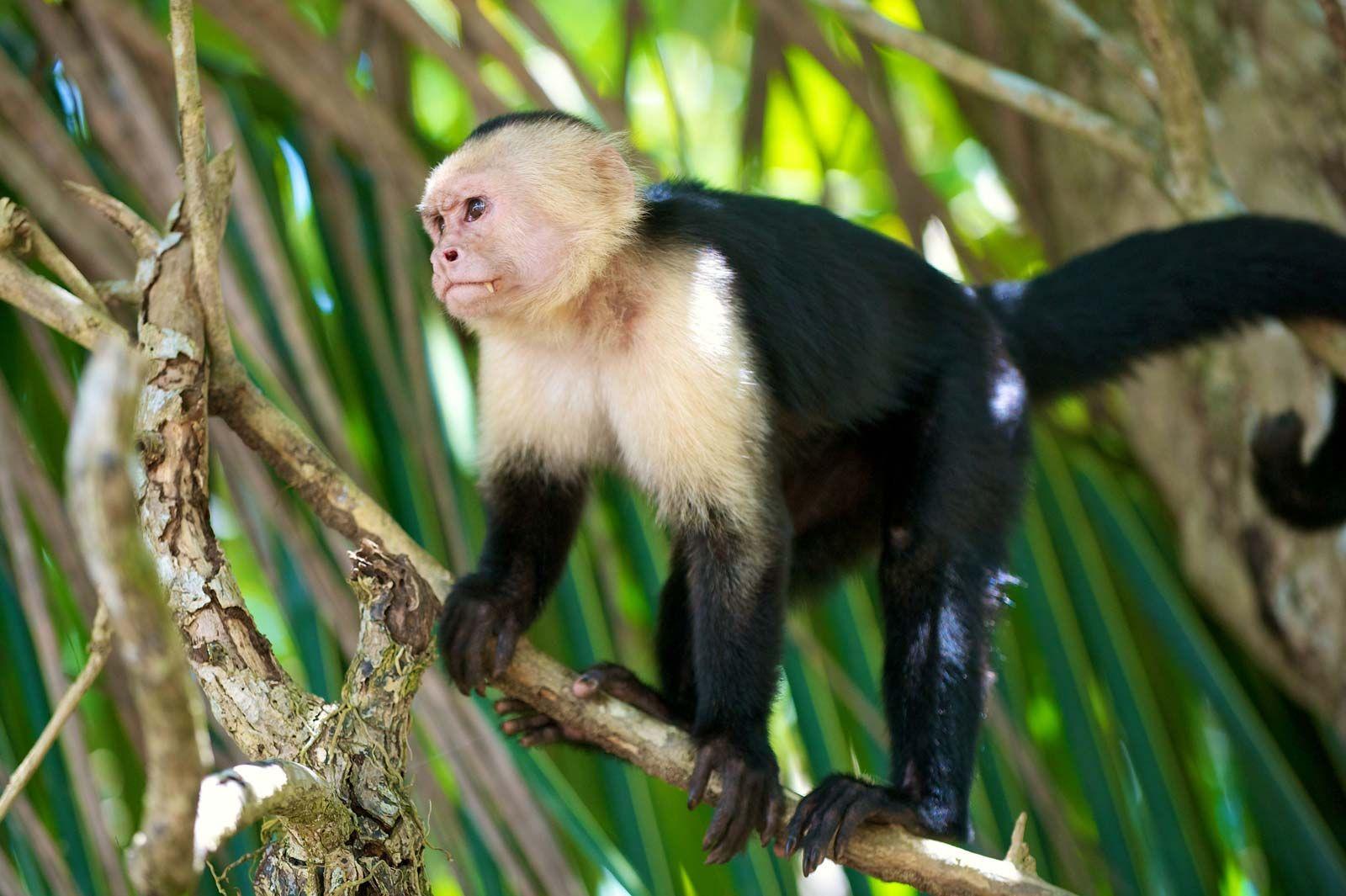
Capuchins are small New World monkeys known for their intelligence and skillful hands. They are often seen using tools and have complex social structures.
Capuchins are easily recognizable by the tufts of white hair that grow around their face and neck.
These monkeys are native to Central and South America and are often kept as pets or trained for assistance roles due to their high intelligence.
- Region of Habitat: Central and South America
- Scientific Name: Cebidae family
- Place of Origin: Central and South America
- Feeding Habits: Omnivorous, feeding on fruits, insects, and small vertebrates
- What Sound They Make: Chattering and screeching
Fun Fact: They were named after Capuchin friars due to their similar appearance. Their tool-using skills are remarkable.
28. Capybara
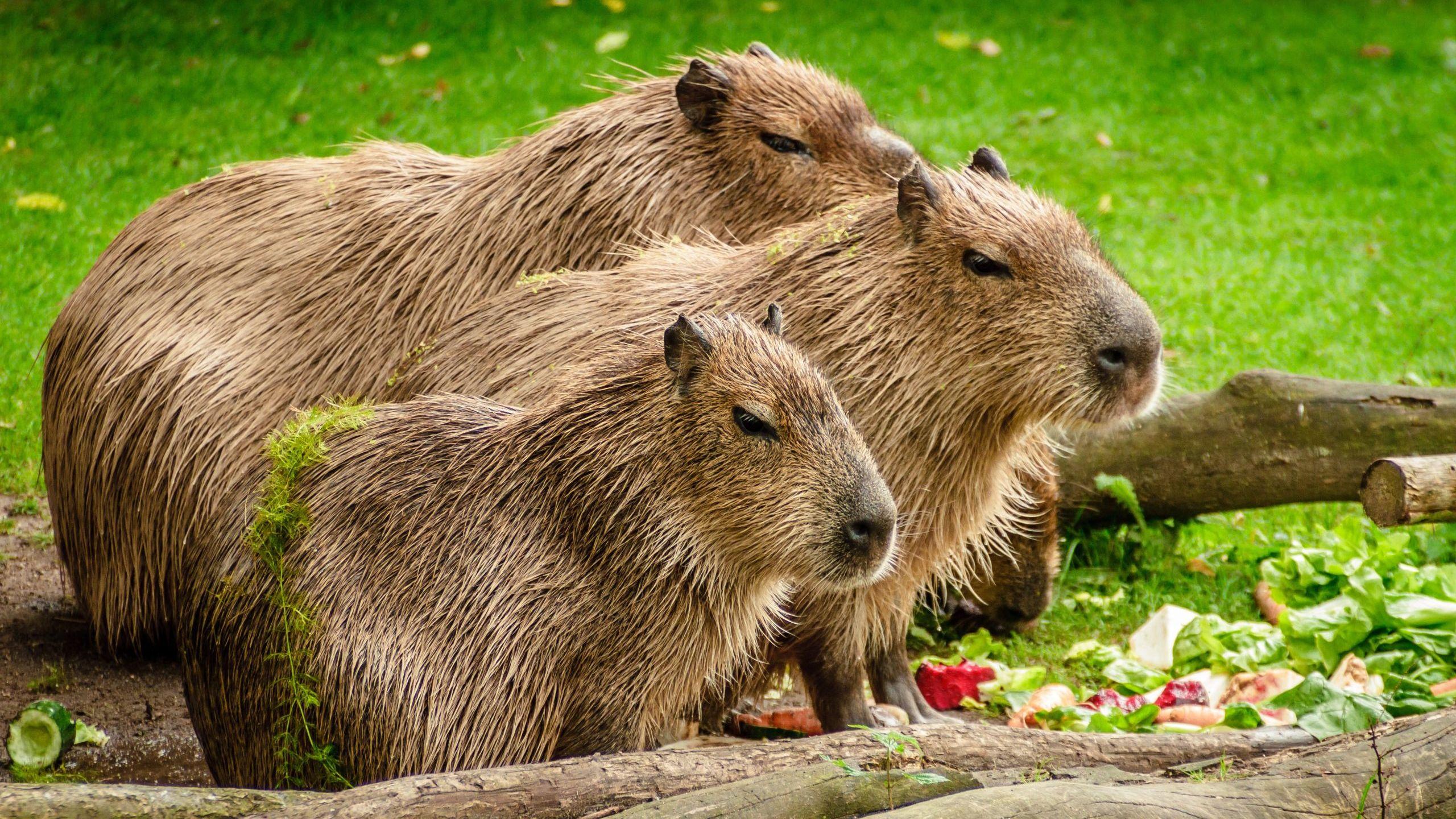
The capybara is the largest rodent in the world, native to Central and South America. These semi-aquatic mammals are closely related to guinea pigs and have a social, gentle nature.
Capybaras are excellent swimmers often found near water bodies such as rivers, lakes, and marshes. They have webbed feet and can hold their breath underwater for several minutes.
- Region of Habitat: Central and South America
- Scientific Name: Hydrochoerus hydrochaeris
- Place of Origin: Central and South America
- Feeding Habits: Herbivorous, feeding on grasses and aquatic plants
- What Sound They Make: Purrs, barks, and whistles
Fun Fact: Excellent at both diving and swimming. Their social behavior is adorable.
29. Caracal
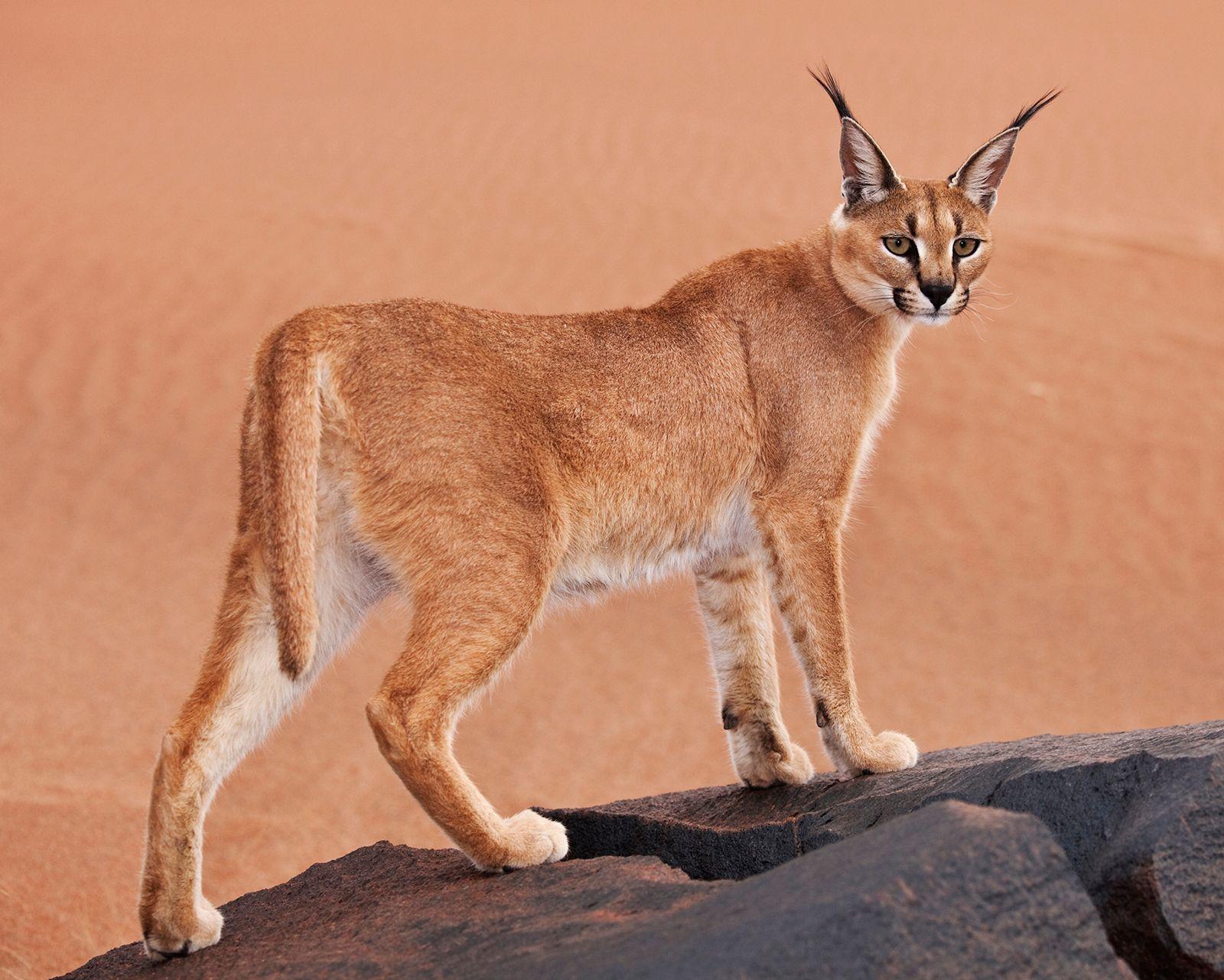
The caracal is a small wild cat known for its distinctive black, tufted ears and agile hunting skills. It can leap high into the air to catch birds in flight.
Caracals are found in Africa, the Middle East, and India. They have a sleek, muscular build and are primarily nocturnal hunters, preying on small mammals, birds, and rodents.
- Region of Habitat: Africa, the Middle East, and India
- Scientific Name: Caracal caracal
- Place of Origin: Africa, the Middle East, and India
- Feeding Habits: Carnivorous, feeding on small mammals, birds, and rodents
- What Sound They Make: Hisses, growls, and purrs
Fun Fact: They can leap up to 3 meters high to catch birds in flight. Their agility is astounding.
30. Caribou
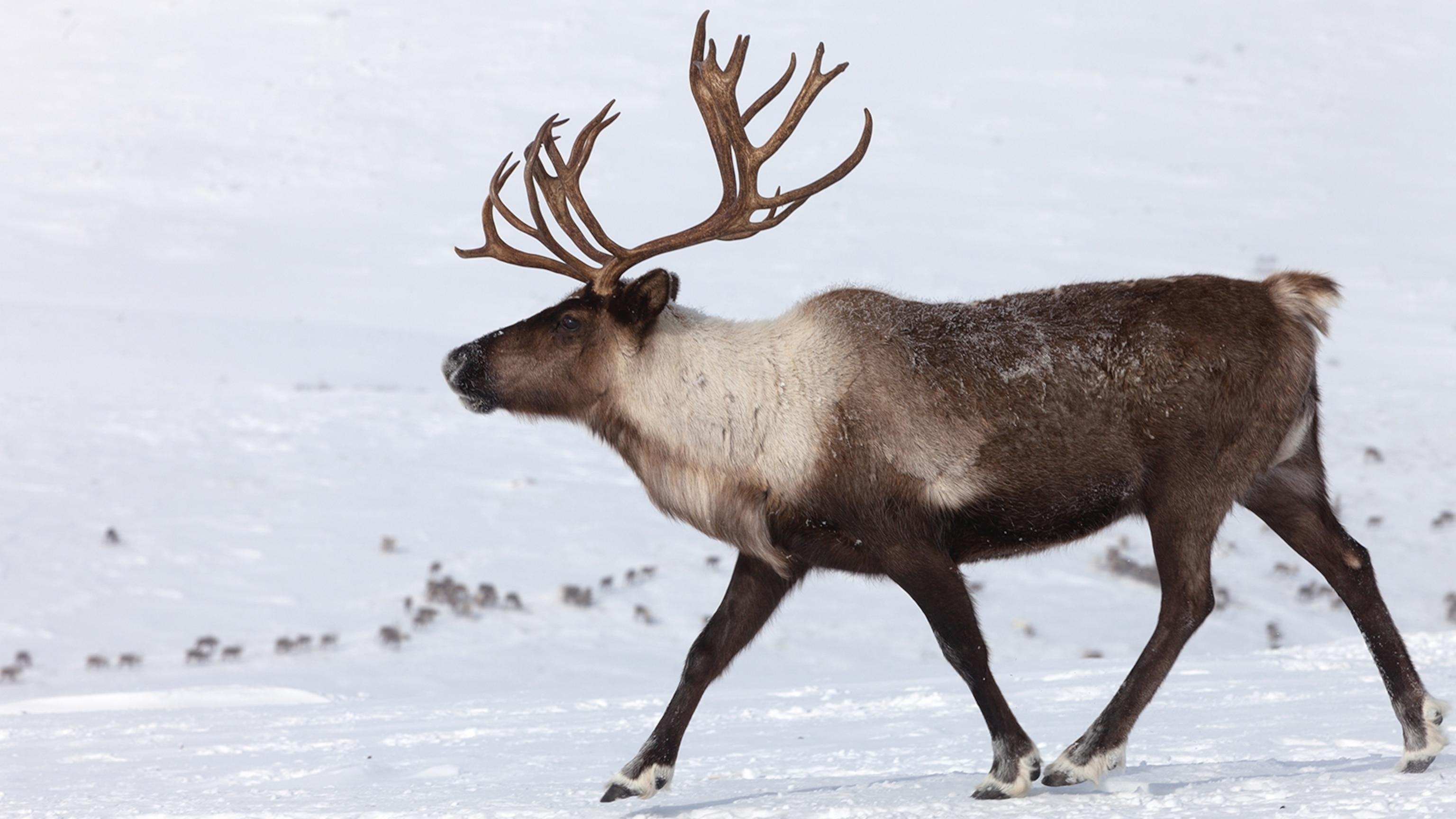
Caribou, also known as reindeer in Europe, are large deer native to Arctic and Subarctic regions.
They are well adapted to cold climates, with thick fur and large hooves that help them walk on snow and dig for food.
Caribou are known for their long migrations, traveling hundreds of miles between their summer and winter ranges.
- Region of Habitat: Arctic and Subarctic regions
- Scientific Name: Rangifer tarandus
- Place of Origin: Arctic and Subarctic regions
- Feeding Habits: Herbivorous, feeding on lichens, grasses, and plants
- What Sound They Make: Grunts and snorts
Fun Fact: Both male and female caribou grow antlers, unlike most deer species. Their migrations are among the longest of any terrestrial mammal.
31. Carolina Dog
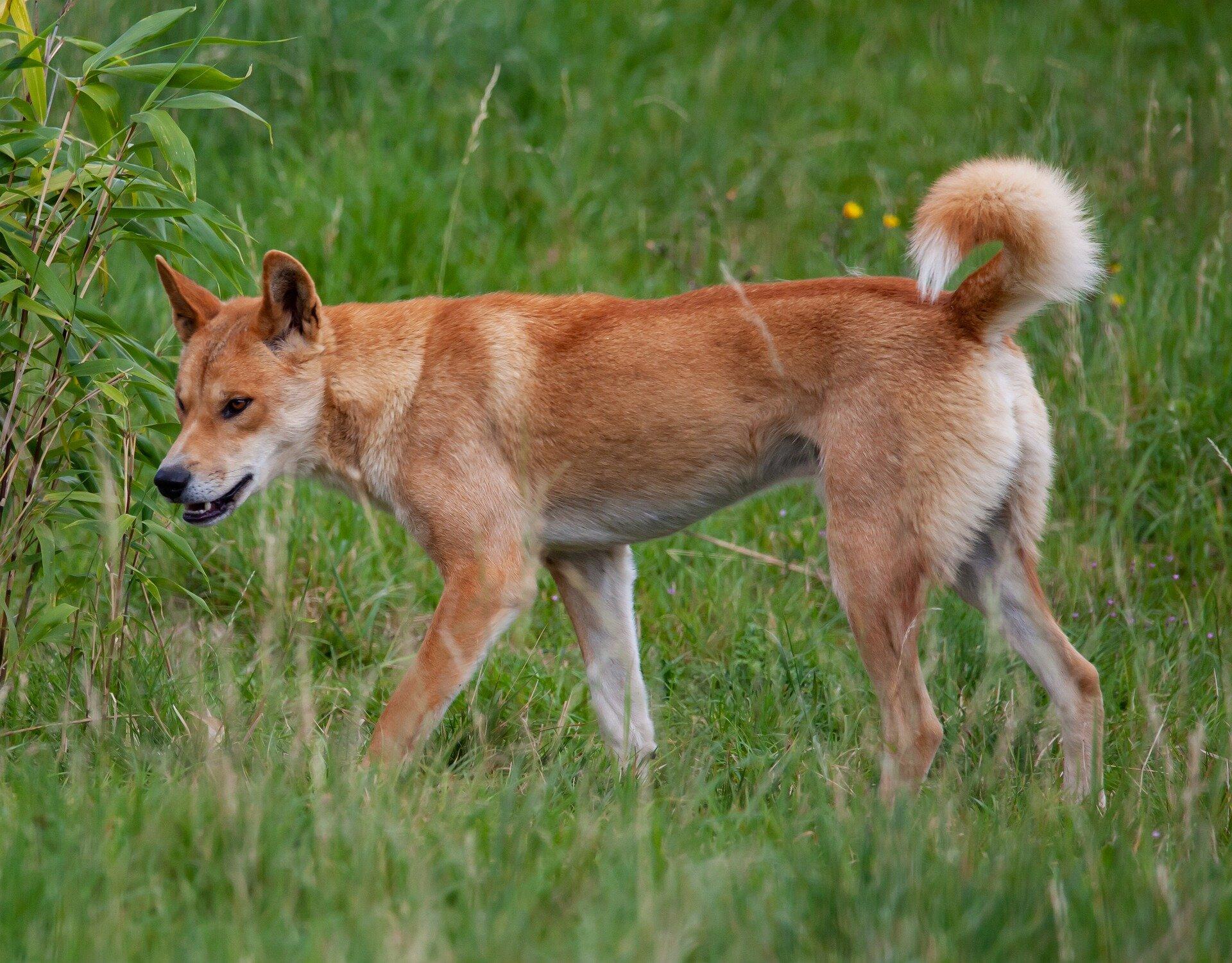
The Carolina Dog, also known as the American Dingo, is a primitive breed in the southeastern United States.
These dogs have a natural, undomesticated appearance and are thought to be descended from ancient dogs.
Carolina Dogs are known for loyalty, intelligence, and strong pack instincts.
- Region of Habitat: Southeastern United States
- Scientific Name: Canis lupus familiaris
- Place of Origin: Southeastern United States
- Feeding Habits: Omnivorous, primarily commercial pet food
- What Sound They Make: Barks and howls
Fun Fact: They are thought to be descended from dogs that accompanied humans across the Bering land bridge. Their survival skills are remarkable.
32. Carpenter Ant
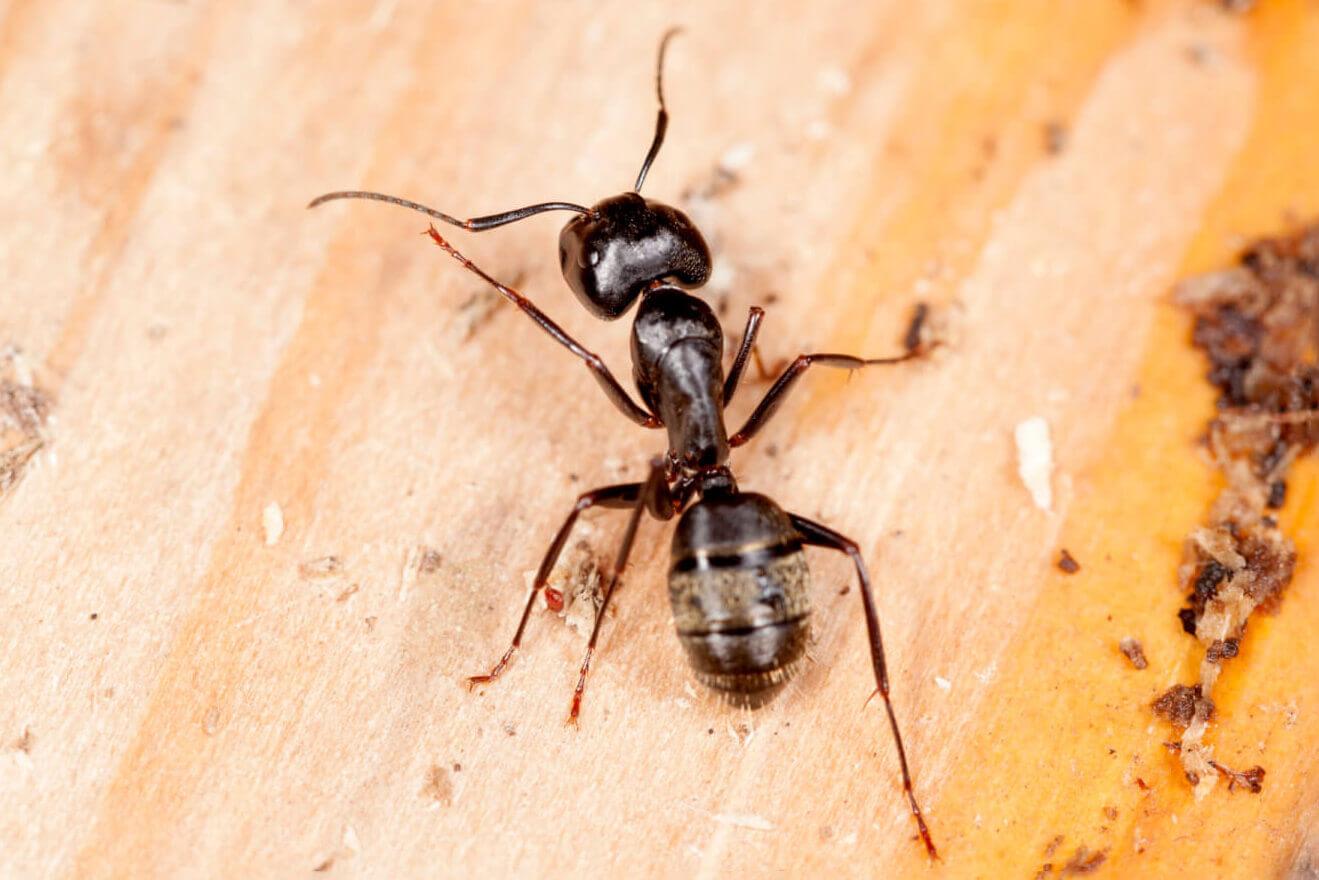
Carpenter ants are large ants known for their ability to burrow into wood to build their nests.
They are found in various habitats, from forests to urban areas, and can cause significant structural damage to wooden buildings.
- Region of Habitat: Worldwide
- Scientific Name: Camponotus spp.
- Place of Origin: Worldwide
- Feeding Habits: Omnivorous, feeding on sweets, meats, and other insects
- What Sound They Make: Silent
Fun Fact: They do not eat wood but excavate it to build their nests. Their tunneling can cause significant damage to structures.
33. Carpet Python
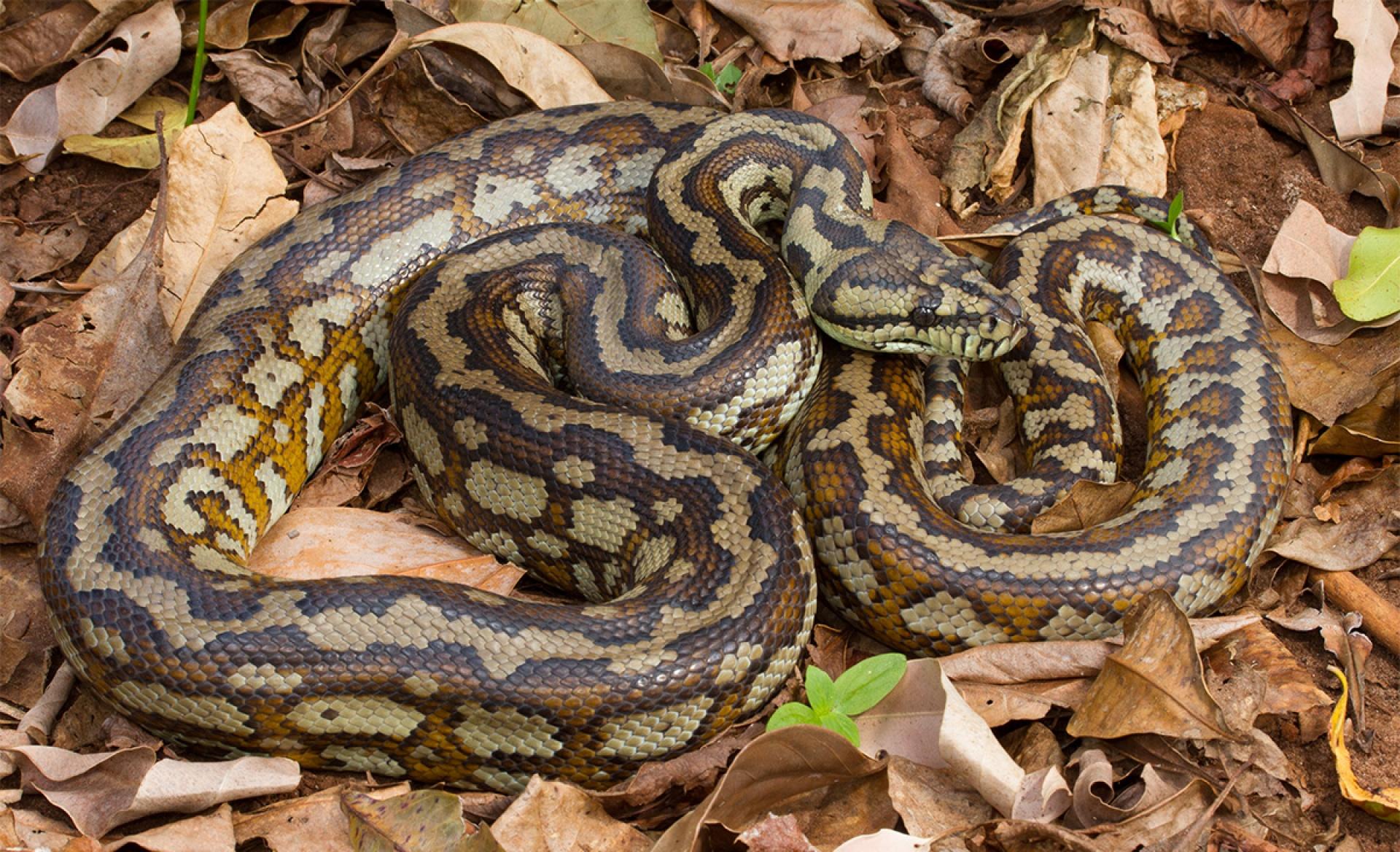
The carpet python is a non-venomous snake found in Australia, New Guinea, and the Solomon Islands.
Carpet pythons are versatile in habitat preference, living in rainforests, woodlands, and urban areas. Due to their manageable size and docile nature, they are often kept as pets.
- Region of Habitat: Australia, New Guinea, Solomon Islands
- Scientific Name: Morelia spilota
- Place of Origin: Australia and New Guinea
- Feeding Habits: Carnivorous, feeding on small mammals, birds, and reptiles
- What Sound They Make: Hisses
Fun Fact: Named for their detailed and variable pattern resembling a carpet. They are popular pets due to their manageable size.
34. Carrion Beetle
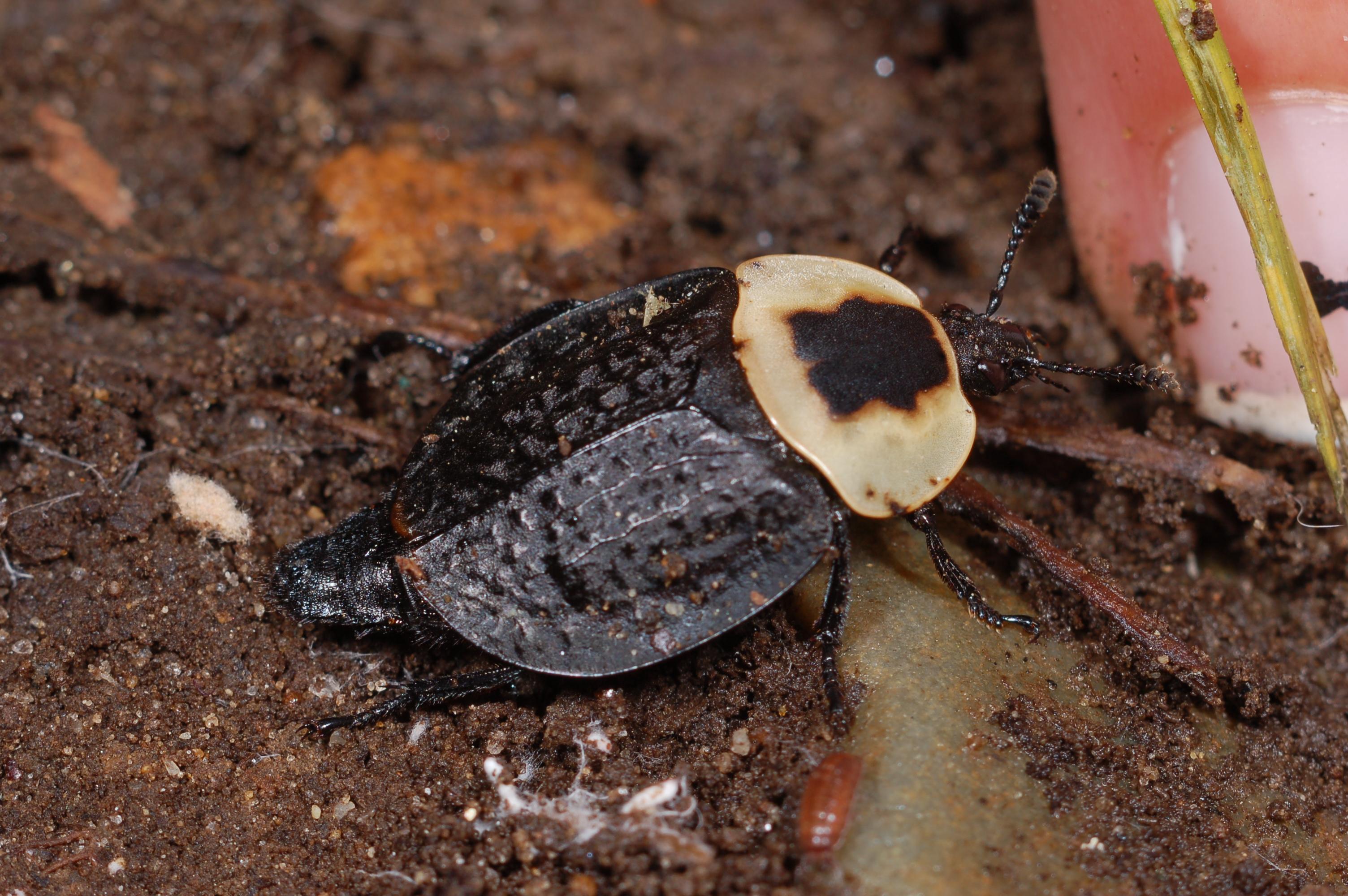
Carrion beetles are insects that play a crucial role in decomposition by feeding on decaying animal matter.
They are often found in forests, fields, and urban areas, wherever there is carrion.
Carrion beetles are known for their strong mandibles and ability to locate dead animals from a significant distance. Their activity helps recycle nutrients back into the ecosystem.
- Region of Habitat: Worldwide
- Scientific Name: Silphidae family
- Place of Origin: Worldwide
- Feeding Habits: Scavengers, feeding on decaying animal matter
- What Sound They Make: Silent
Fun Fact: They can locate dead animals from a significant distance. Their role in decomposition is vital.
35. Cassowary
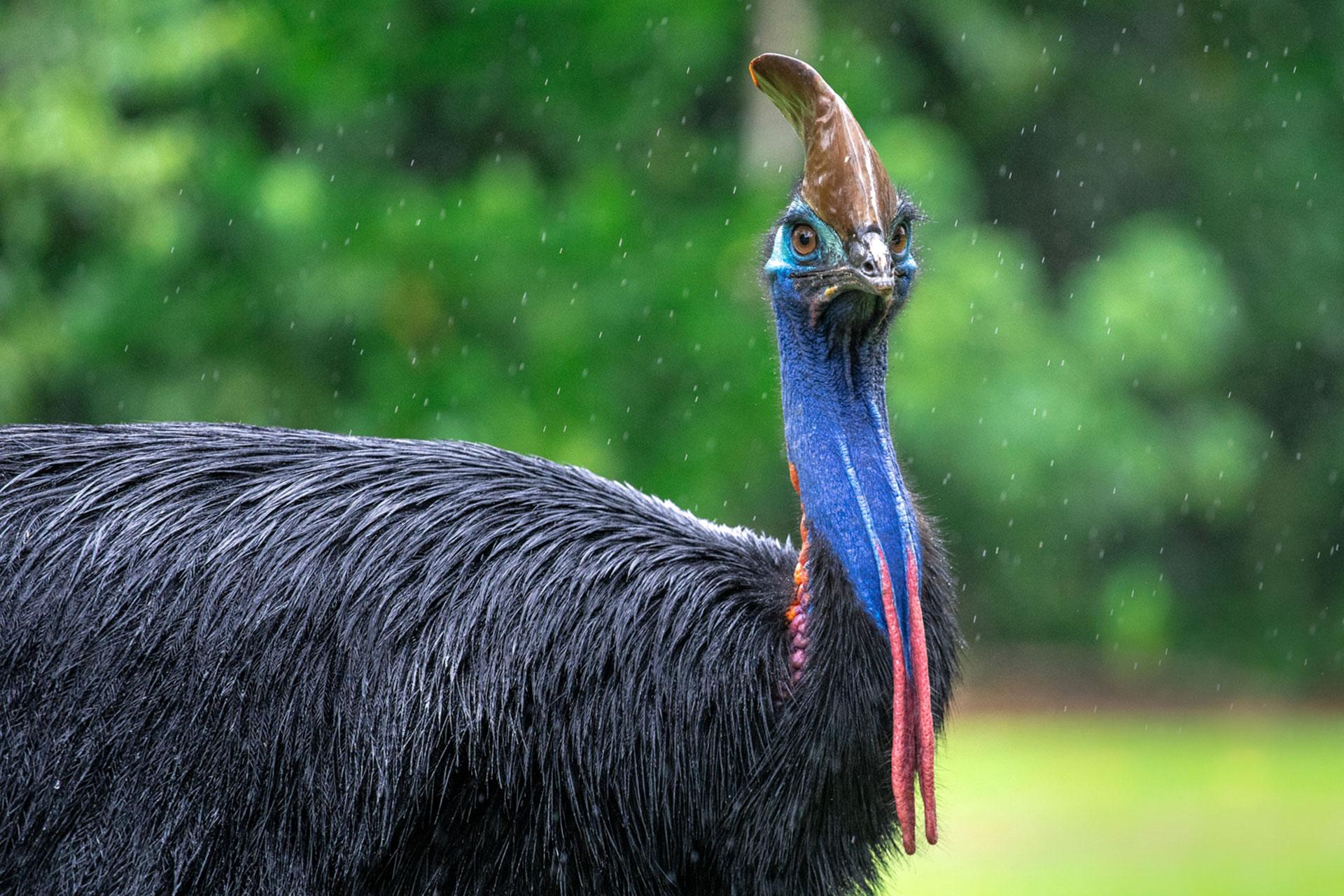
The cassowary is a large, flightless bird native to the tropical forests of New Guinea, nearby islands, and northern Australia.
It is known for its striking blue and black plumage and a prominent casque on its head. Cassowaries are solitary and can be aggressive, especially when threatened.
They play an important role in their ecosystem by dispersing seeds through their diet of fruits and small animals.
- Region of Habitat: New Guinea, nearby islands, northern Australia
- Scientific Name: Casuarius spp.
- Place of Origin: New Guinea and northern Australia
- Feeding Habits: Omnivorous, feeding on fruits and small animals
- What Sound They Make: Booming calls and hisses
Fun Fact: They can run up to 50 kilometers per hour and jump up to 1.5 meters. Their speed and agility are impressive.
36. Catfish
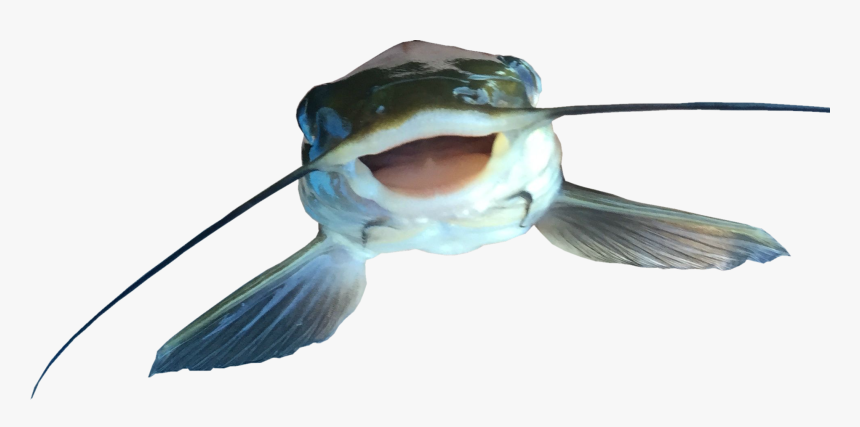
Catfish are a diverse group of ray-finned fish known for their prominent barbels resembling cat whiskers.
They are found in freshwater environments worldwide, from rivers and lakes to ponds and streams.
Catfish have adapted to various habitats and are an important food source in many cultures. They are known for their ability to sense prey using their barbels.
- Region of Habitat: Freshwater environments worldwide
- Scientific Name: Siluriformes order
- Place of Origin: Worldwide
- Feeding Habits: Omnivorous, feeding on plant matter, insects, and small fish
- What Sound They Make: Grunts
Fun Fact: Some species can produce electric shocks. Their adaptations are mesmerizing.
37. Cattle Egret
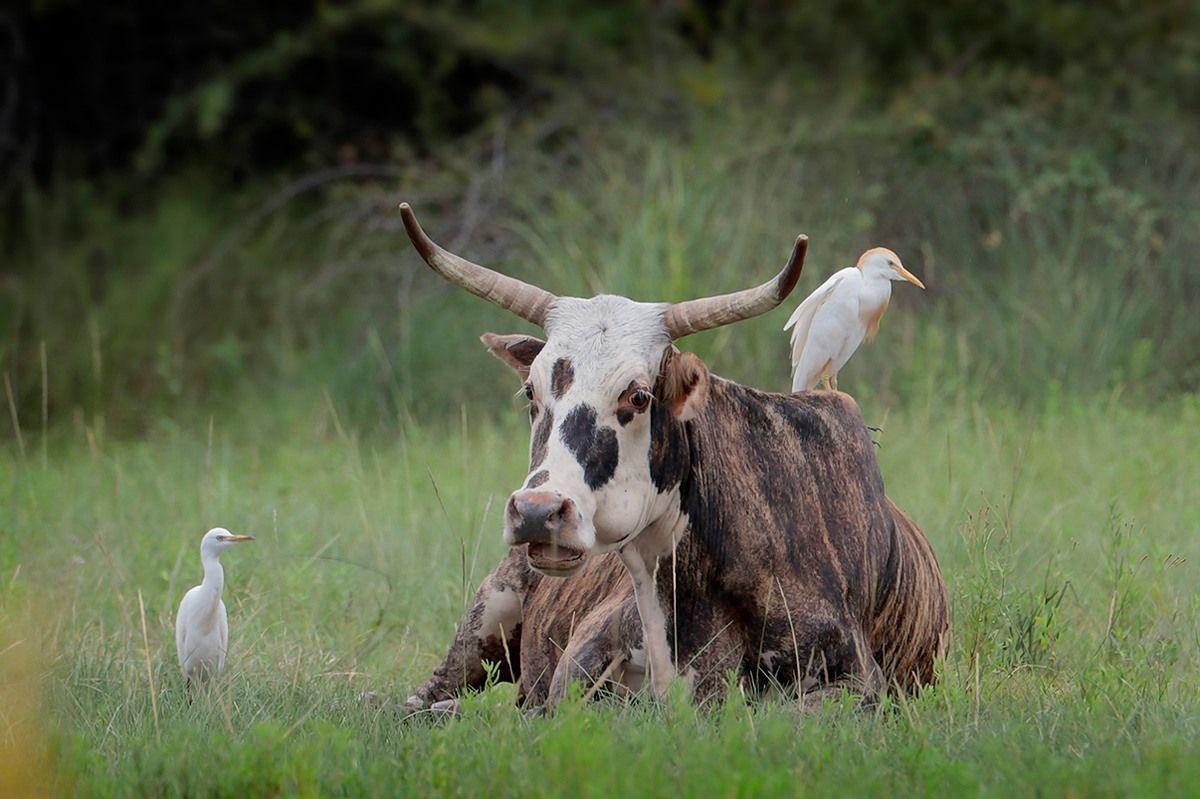
The cattle egret is a small, white heron known for associating with grazing animals such as cattle and horses. These birds feed on insects and small animals disturbed by livestock.
Cattle egrets are highly adaptable and can be found in various habitats, including grasslands, wetlands, and agricultural fields.
- Region of Habitat: Worldwide, particularly in tropical and temperate regions
- Scientific Name: Bubulcus ibis
- Place of Origin: Africa
- Feeding Habits: Omnivorous, feeding on insects and small animals
- What Sound They Make: Squawks
Fun Fact: Often seen riding on the backs of animals to catch insects. Their adaptability is remarkable.
38. Cave Bear
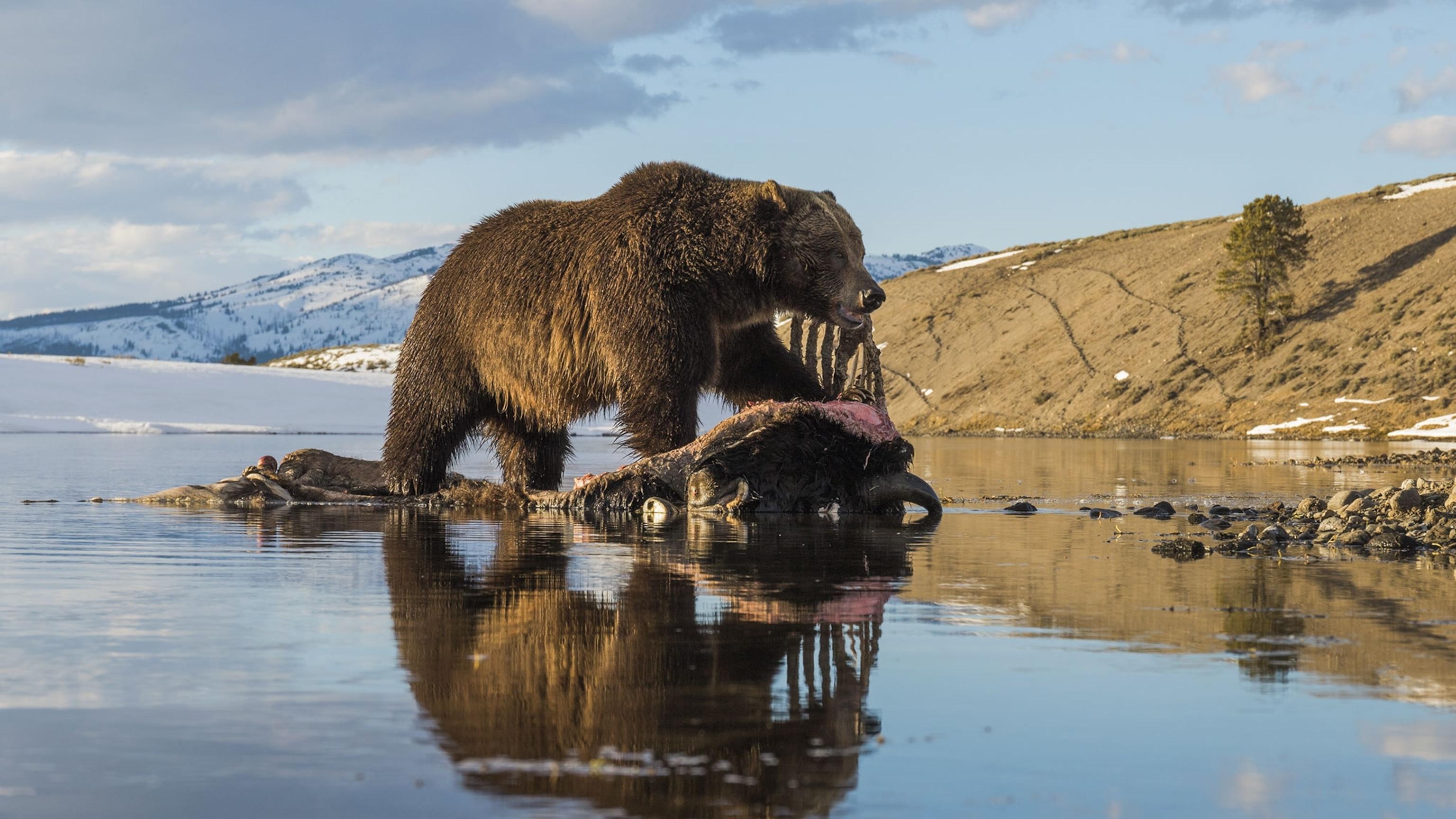
The cave bear is an extinct species of bear that lived in Europe and Asia during the Pleistocene epoch.
These bears were known for their large size and were primarily herbivorous, feeding on plants and berries.
Cave bears are often associated with prehistoric humans, as their remains have been found in caves alongside human artifacts. They became extinct around 24,000 years ago.
- Region of Habitat: Extinct, formerly in Europe and Asia
- Scientific Name: Ursus spelaeus
- Place of Origin: Europe and Asia
- Feeding Habits: Herbivorous, feeding on plants and berries
- What Sound They Make: Unknown (extinct species)
Fun Fact: Remains have been found in caves alongside human artifacts. Their history knits with early humans.
39. Coypu
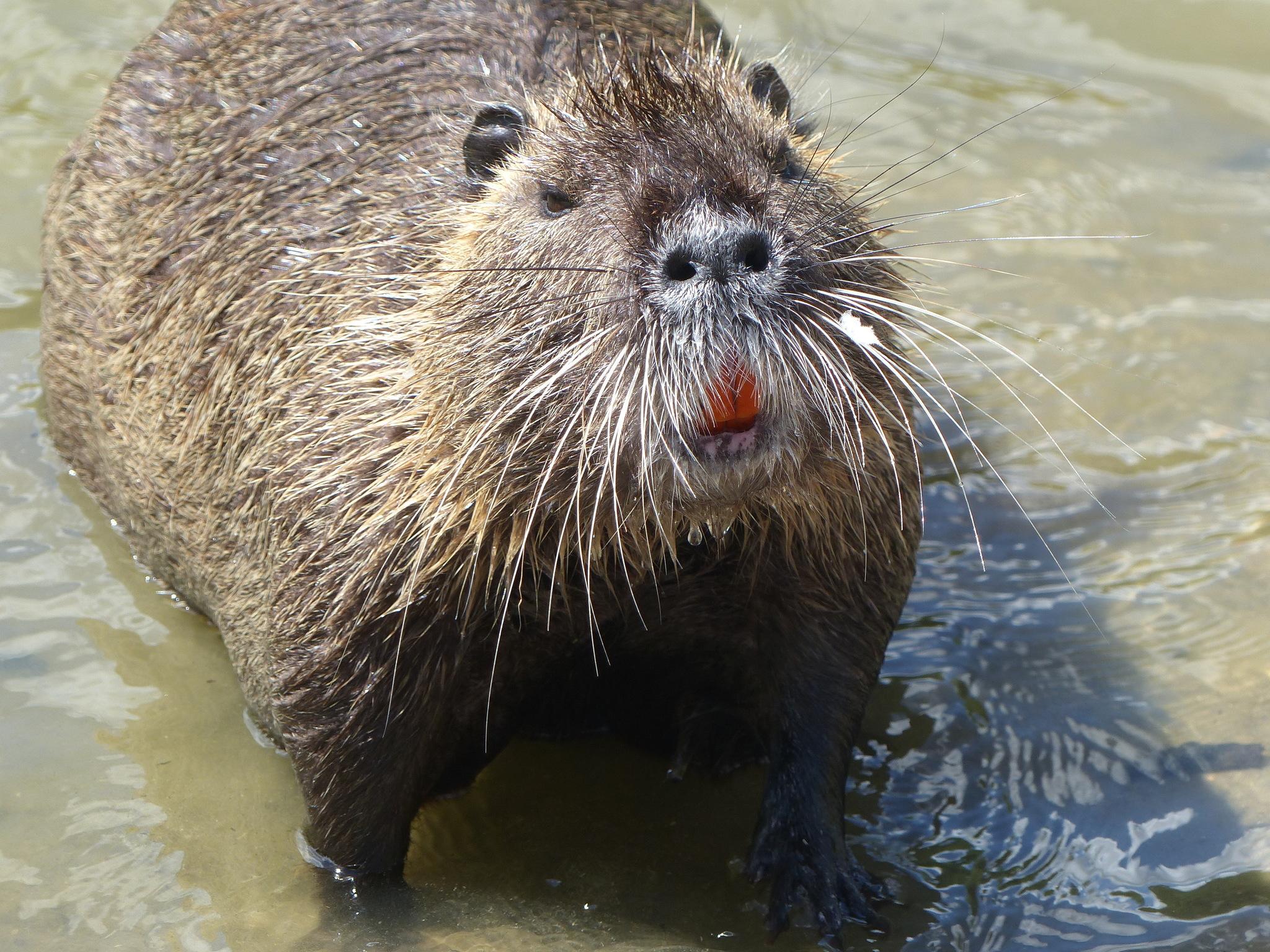
The coypu, also known as the nutria, is a large, semi-aquatic rodent native to South America. It is known for its webbed hind feet and large, orange incisors.
Coypus are often found in freshwater marshes, rivers, and lakes, where they build complex burrow systems.
They feed primarily on plant material and are considered an invasive species in many parts of the world due to their destructive feeding habits.
- Region of Habitat: South America, introduced to other areas
- Scientific Name: Myocastor coypus
- Place of Origin: South America
- Feeding Habits: Herbivorous, feeding on aquatic plants
- What Sound They Make: Squeaks and grunts
Fun Fact: Coypus have large, orange incisors that continuously grow and must be worn down by gnawing. Their impact on ecosystems can be significant.
40. Cavefish
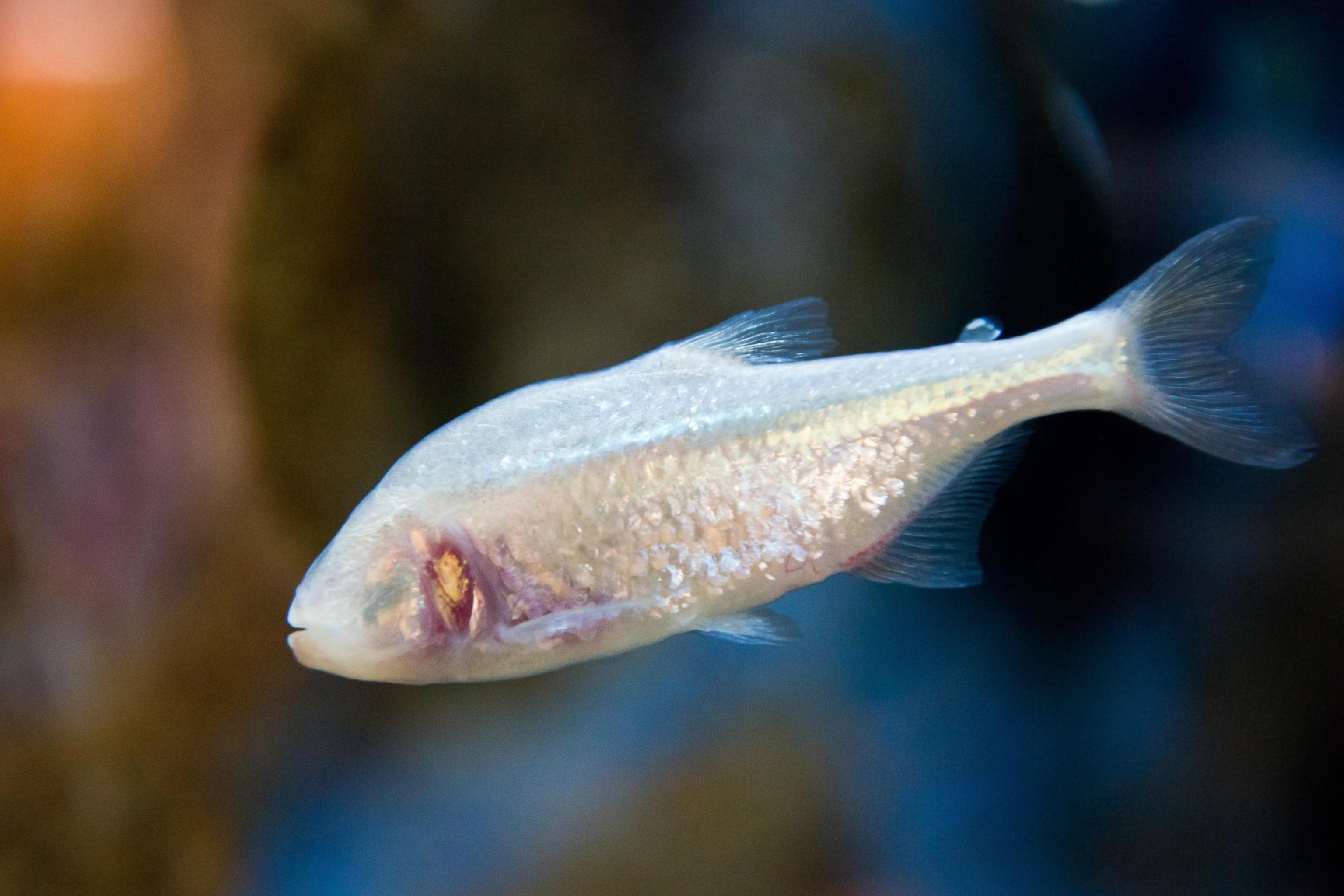
Cavefish are a group of fish adapted to life in dark, underground environments.
They are often characterized by a lack of pigmentation and reduced or absent eyes, as vision is unnecessary in their dark habitat.
Cavefish have evolved other senses, such as heightened touch and taste, to operate and find food. They are found in caves and underground rivers worldwide.
- Region of Habitat: Caves and underground rivers worldwide
- Scientific Name: Varies by species
- Place of Origin: Worldwide
- Feeding Habits: Carnivorous, feeding on small aquatic organisms
- What Sound They Make: Silent
Fun Fact: They often lack pigmentation and have reduced or absent eyes. Their adaptations are a marvel of evolution.
41. Cavoodle

The Cavoodle, also known as the Cavapoo, is a hybrid breed resulting from the cross between a Cavalier King Charles Spaniel and a Poodle.
This breed is known for its friendly and loving nature, making it a popular choice for families and individuals.
- Region of Habitat: Worldwide as pets
- Scientific Name: Canis lupus familiaris
- Place of Origin: Worldwide
- Feeding Habits: Omnivorous, primarily commercial pet food
- What Sound They Make: Barks and whines
Fun Fact: They are known for their friendly and affectionate nature. Their hypoallergenic coat is a bonus for allergy sufferers.
42. Centipede
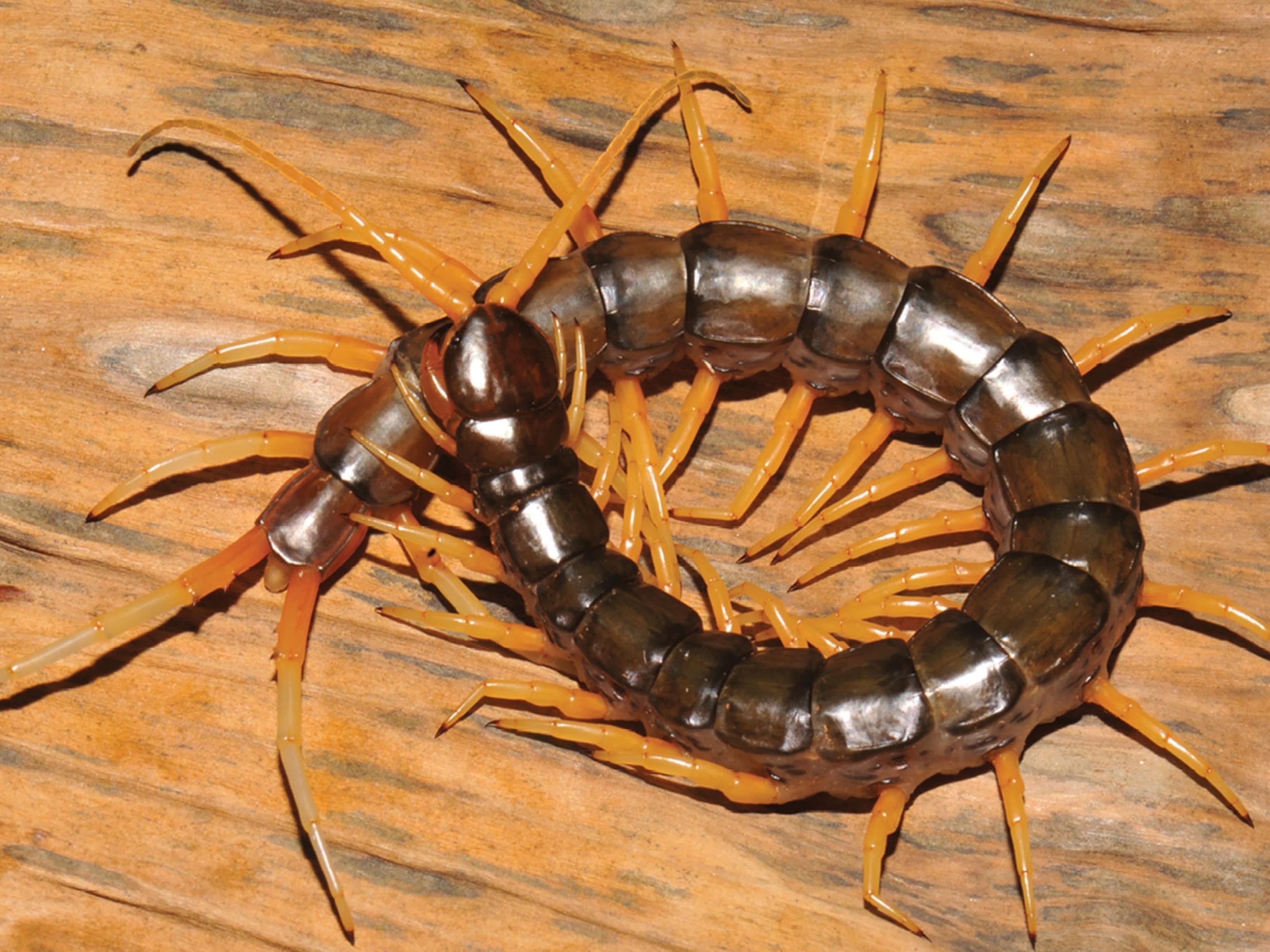
Centipedes have elongated arthropods with numerous legs, one pair per body segment. They are found in various habitats, from forests and grasslands to urban areas.
Centipedes are carnivorous and use their venomous claws to capture and stop prey. They are known for their fast movement and can be beneficial in controlling pest populations.
- Region of Habitat: Worldwide
- Scientific Name: Chilopoda class
- Place of Origin: Worldwide
- Feeding Habits: Carnivorous, feeding on insects and small animals
- What Sound They Make: Silent
Fun Fact: They can have anywhere from 30 to 354 legs depending on the species. Their speed and predatory skills are impressive.
43. Cesky Terrier

The Cesky Terrier is a small, sturdy dog from the Czech Republic. Known for their gentle and playful nature, they make excellent companions and are good with children.
They have a unique appearance with a long, silky coat and a distinctive beard. This breed is also known for its hunting ability, particularly in tracking and flushing out game.
- Region of Habitat: Worldwide as pets
- Scientific Name: Canis lupus familiaris
- Place of Origin: Czech Republic
- Feeding Habits: Omnivorous, primarily commercial pet food
- What Sound They Make: Barks and growls
Fun Fact: They originated from the Czech Republic and are known for their hunting abilities. Their appearance is unique and charming.
44. Chameleon
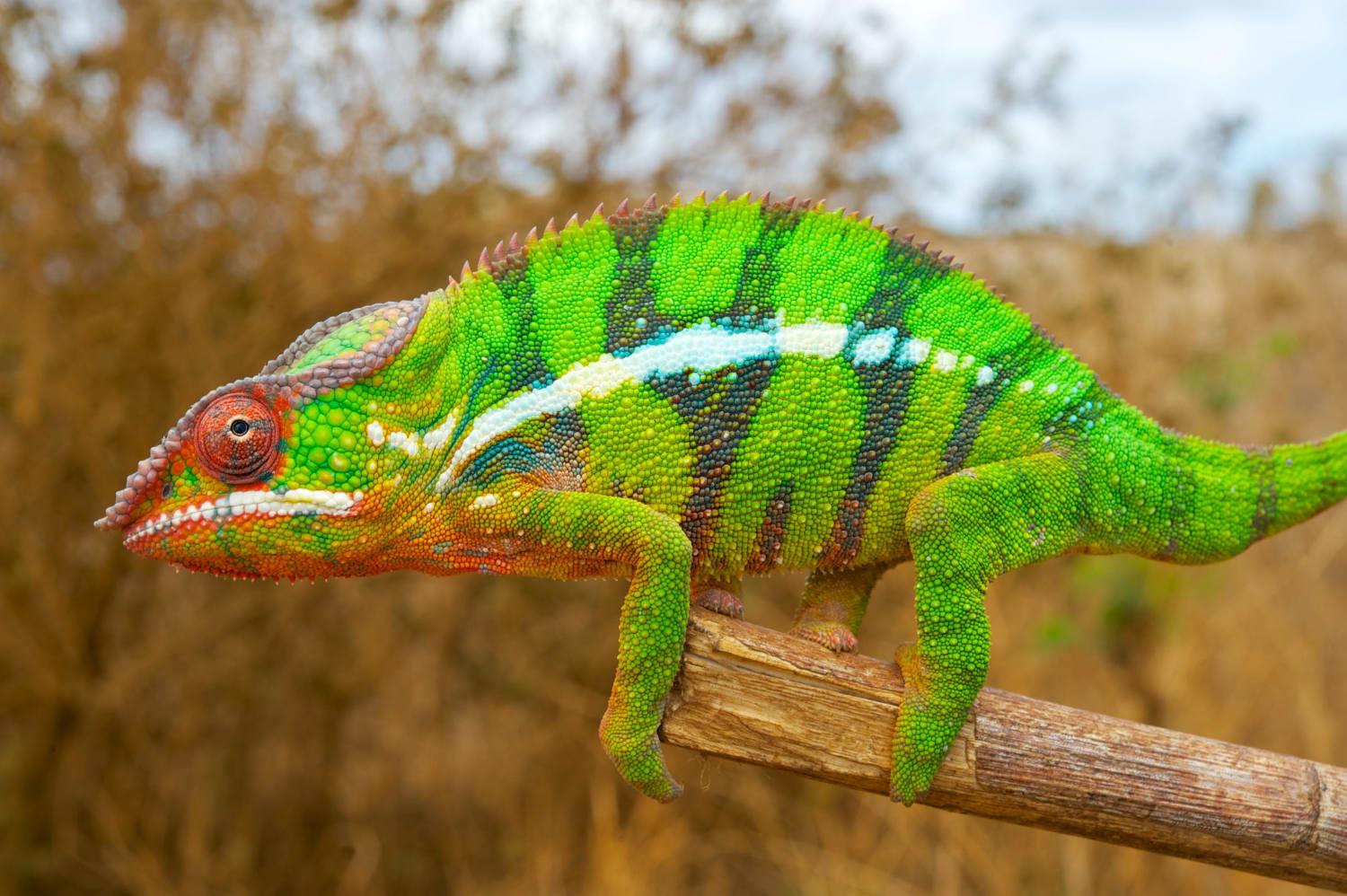
Chameleons are a unique and highly specialized group of lizards known for their ability to change color.
This ability helps them communicate, regulate their body temperature, and camouflage themselves from predators.
Chameleons have unique, independently moving eyes and long, sticky tongues that they use to catch prey. They are primarily found in Africa, Madagascar, Asia, and Europe.
- Region of Habitat: Africa, Madagascar, parts of Asia and Europe
- Scientific Name: Chamaeleonidae family
- Place of Origin: Africa and Madagascar
- Feeding Habits: Carnivorous, feeding on insects
- What Sound They Make: Silent
Fun Fact: They can change color to communicate, regulate body temperature, and camouflage. Their eyes and tongues are charming.
45. Chamois
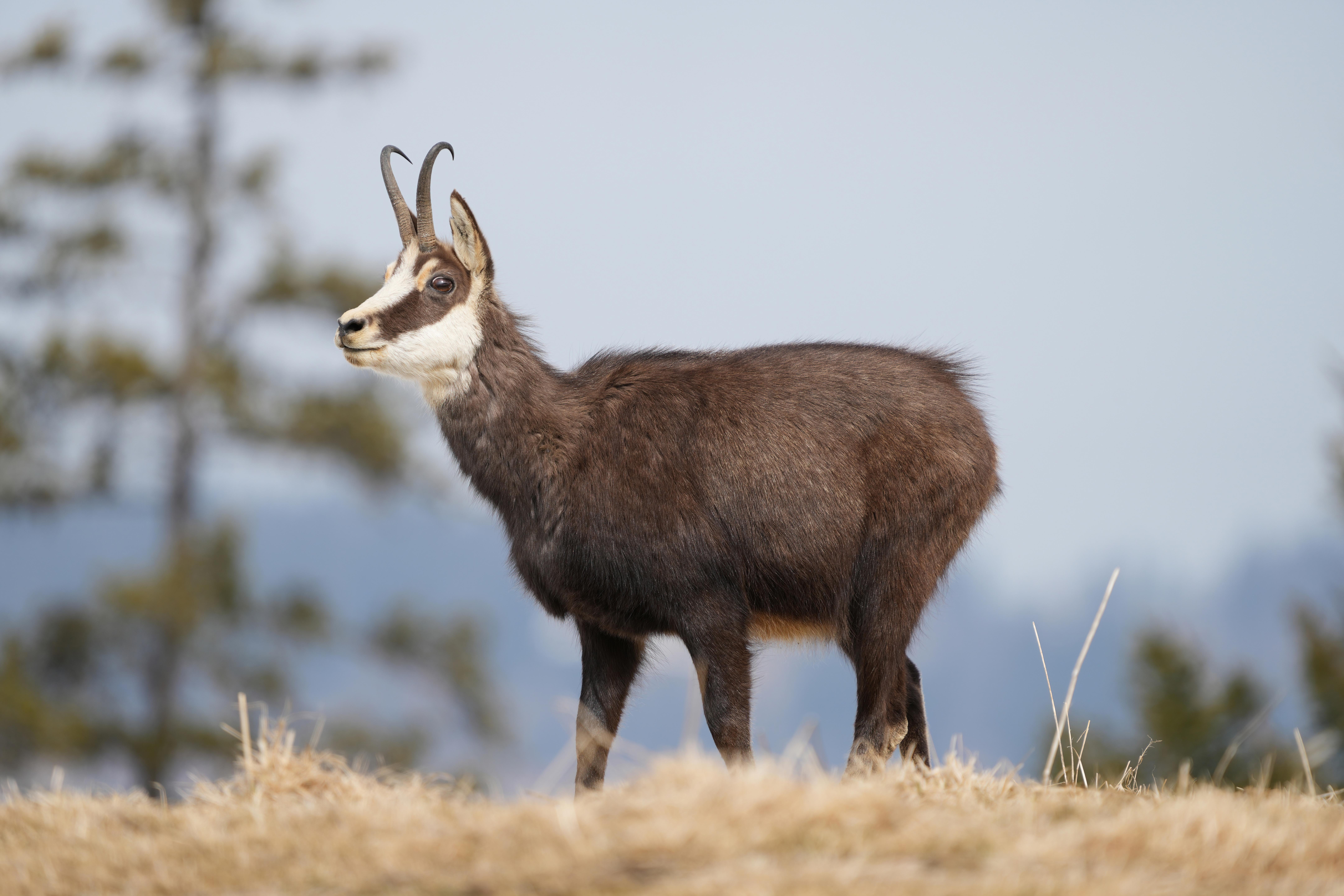
The chamois is a goat-antelope species native to the mountainous regions of Europe, including the Alps and the Carpathians.
Chamois are known for their agility and sure-footedness. They can easily guide steep and rocky terrain. Chamois have a distinctive black-and-white face and a short, hooked horn.
They are popular game animals and are farmed for their meat and leather.
- Region of Habitat: Europe, including the Alps and the Carpathians
- Scientific Name: Rupicapra rupicapra
- Place of Origin: Europe
- Feeding Habits: Herbivorous, feeding on grasses and herbs
- What Sound They Make: Whistles and bleats
Fun Fact: They are known for their agility and ability to guide steep and rocky terrain. Their sure-footedness is remarkable.
46. Cheagle

The Cheagle is a hybrid breed resulting from the cross between a Chihuahua and a Beagle.
This small, energetic dog is known for its friendly and loving nature.
Cheagles are popular pets due to their compact size and lively personality. They are good with children and other pets, making them suitable for families.
- Region of Habitat: Worldwide as pets
- Scientific Name: Canis lupus familiaris
- Place of Origin: Worldwide
- Feeding Habits: Omnivorous, primarily commercial pet food
- What Sound They Make: Barks and howls
Fun Fact: They are known for their friendly and affectionate nature. Their playful conduct is charming.
47. Cheetah
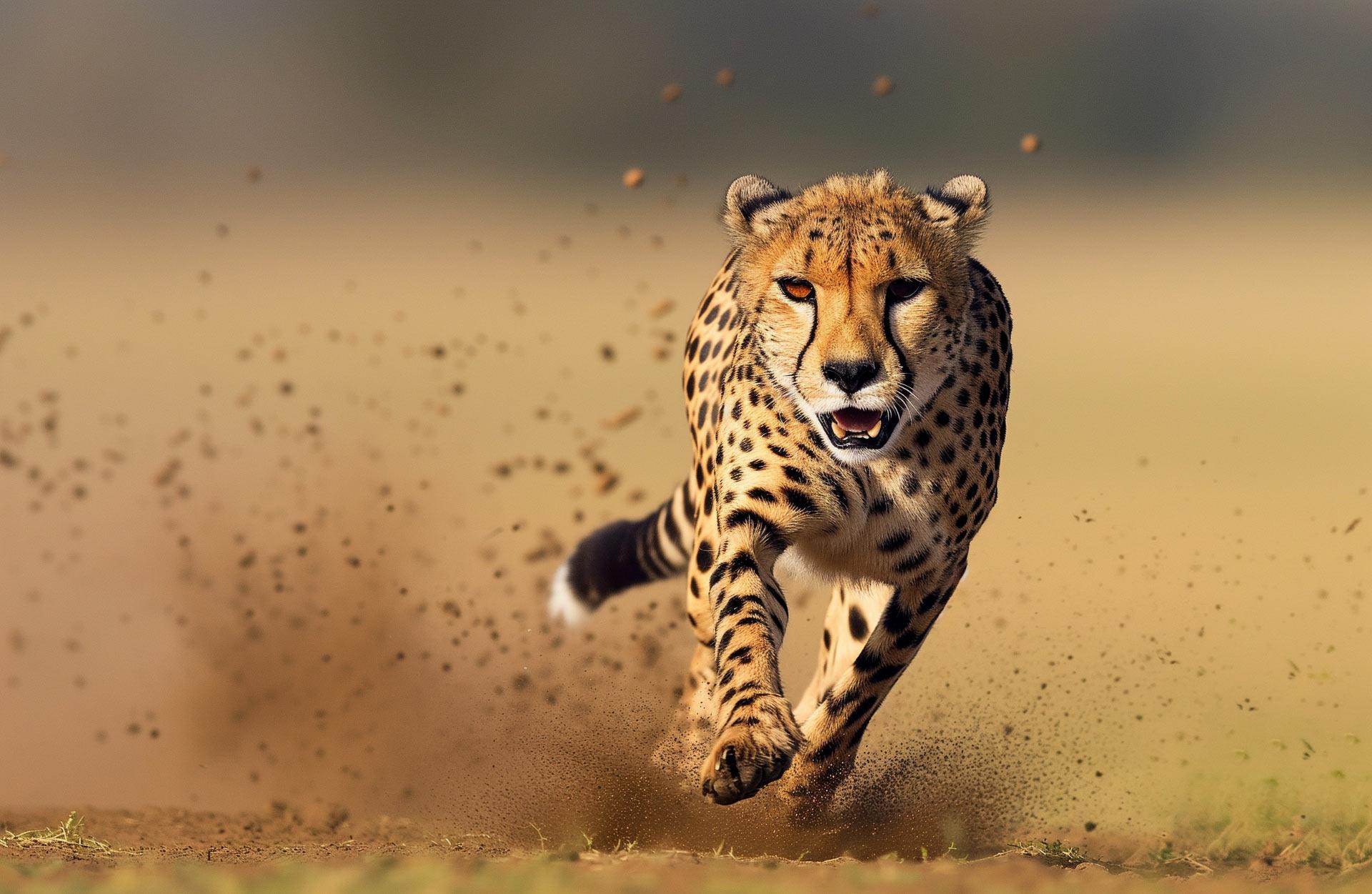
Cheetahs are built for speed, with a lightweight frame, long legs, and a flexible spine. They are primarily found in Africa and parts of Iran.
They have unique black spots on their yellowish coat and tear-like streaks running from the inner corners of their eyes to the sides of their mouth.
- Region of Habitat: Africa and parts of Iran
- Scientific Name: Acinonyx jubatus
- Place of Origin: Africa
- Feeding Habits: Carnivorous, feeding on small to medium-sized ungulates
- What Sound They Make: Chirps, purrs, and growls
Fun Fact: The fastest land animal, reaching up to 75 miles per hour. Their speed is unmatched.
48. Chesapeake Bay Retriever
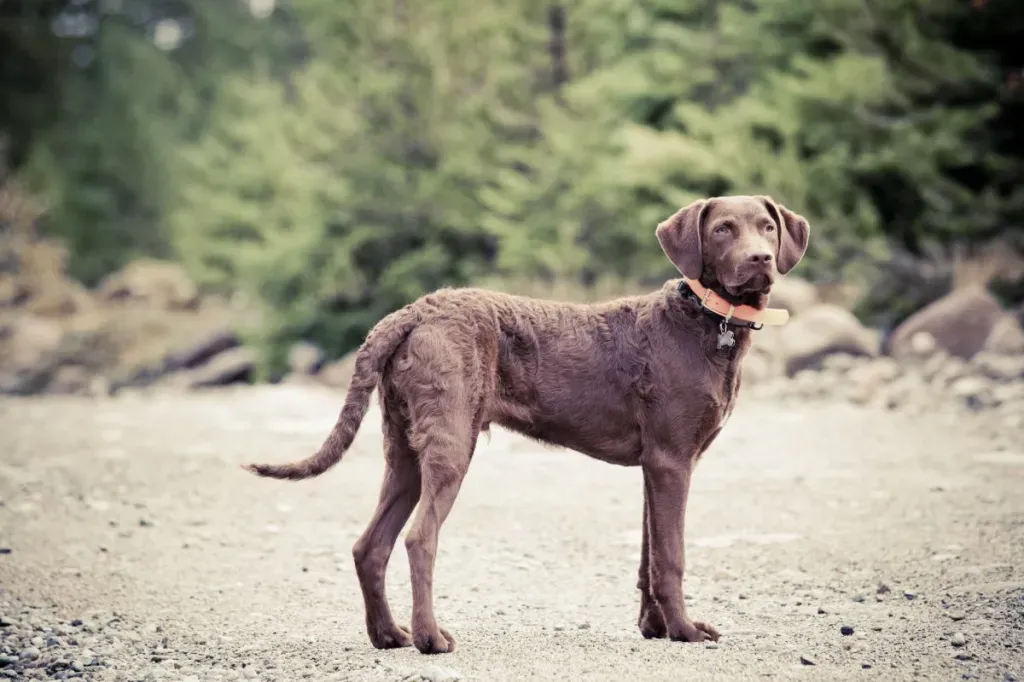
The Chesapeake Bay Retriever is a large, strong breed known for its excellent swimming ability and waterfowl hunting skills.
Originating from the Chesapeake Bay area in the United States, these dogs are highly valued for their intelligence, loyalty, and hardworking nature.
They have a distinctive curly, waterproof coat that helps them withstand cold water temperatures.
- Region of Habitat: United States
- Scientific Name: Canis lupus familiaris
- Place of Origin: United States
- Feeding Habits: Omnivorous, primarily commercial pet food
- What Sound They Make: Barks and howls
Fun Fact: They are known for their excellent swimming ability, waterfowl hunting skills, and impressive endurance in cold water.
49. Chicken
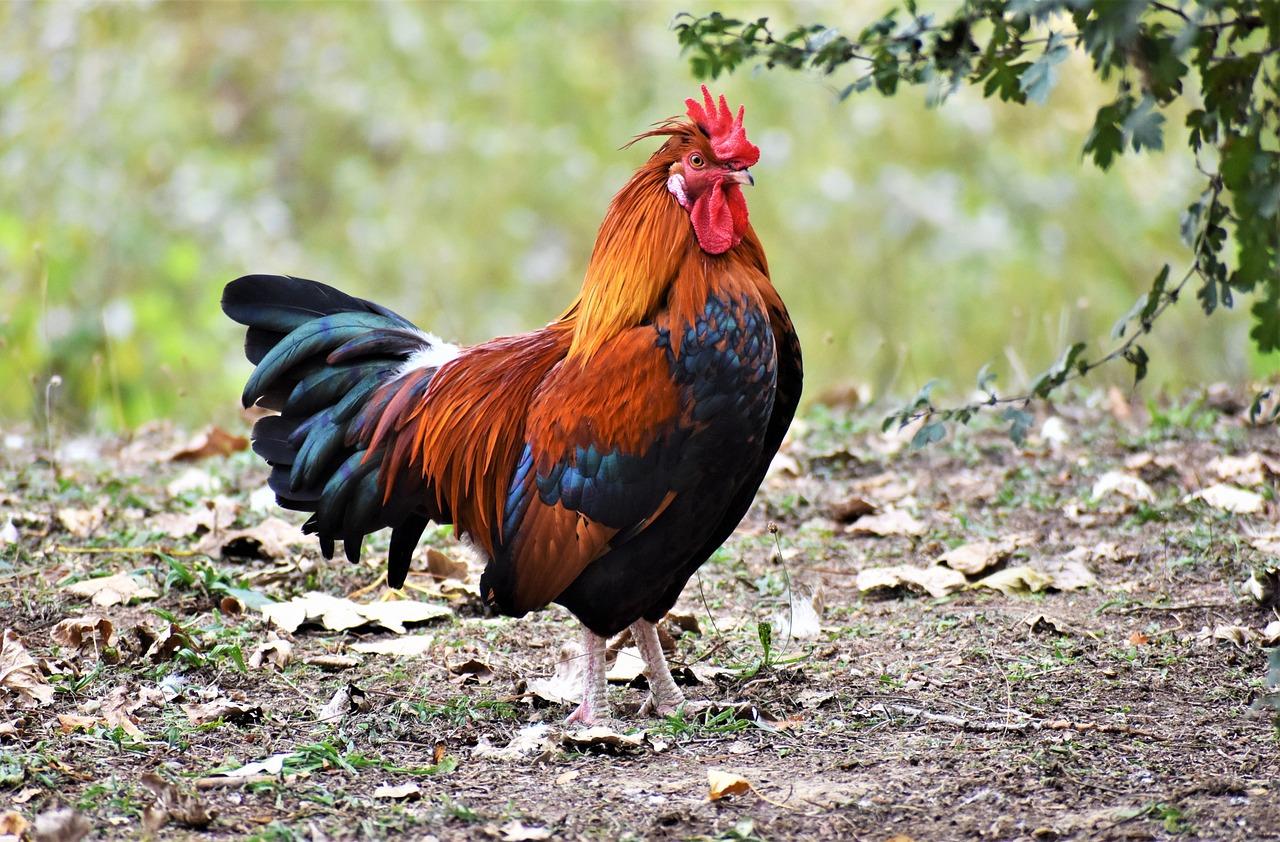
Chickens are domesticated birds that are widely kept for their eggs and meat.
Chickens are highly adaptable and can be found in various environments worldwide.
They are known for their social behavior and vocalizations, including crowing, clucking, and cackling.
- Region of Habitat: Worldwide
- Scientific Name: Gallus gallus domesticus
- Place of Origin: Southeast Asia
- Feeding Habits: Omnivorous, feeding on grains, seeds, and insects
- What Sound They Make: Clucks, crows, and cackles
Fun Fact: Believed to have been domesticated from wild jungle fowl in Southeast Asia. Their adaptability is remarkable.
50. Chinchilla
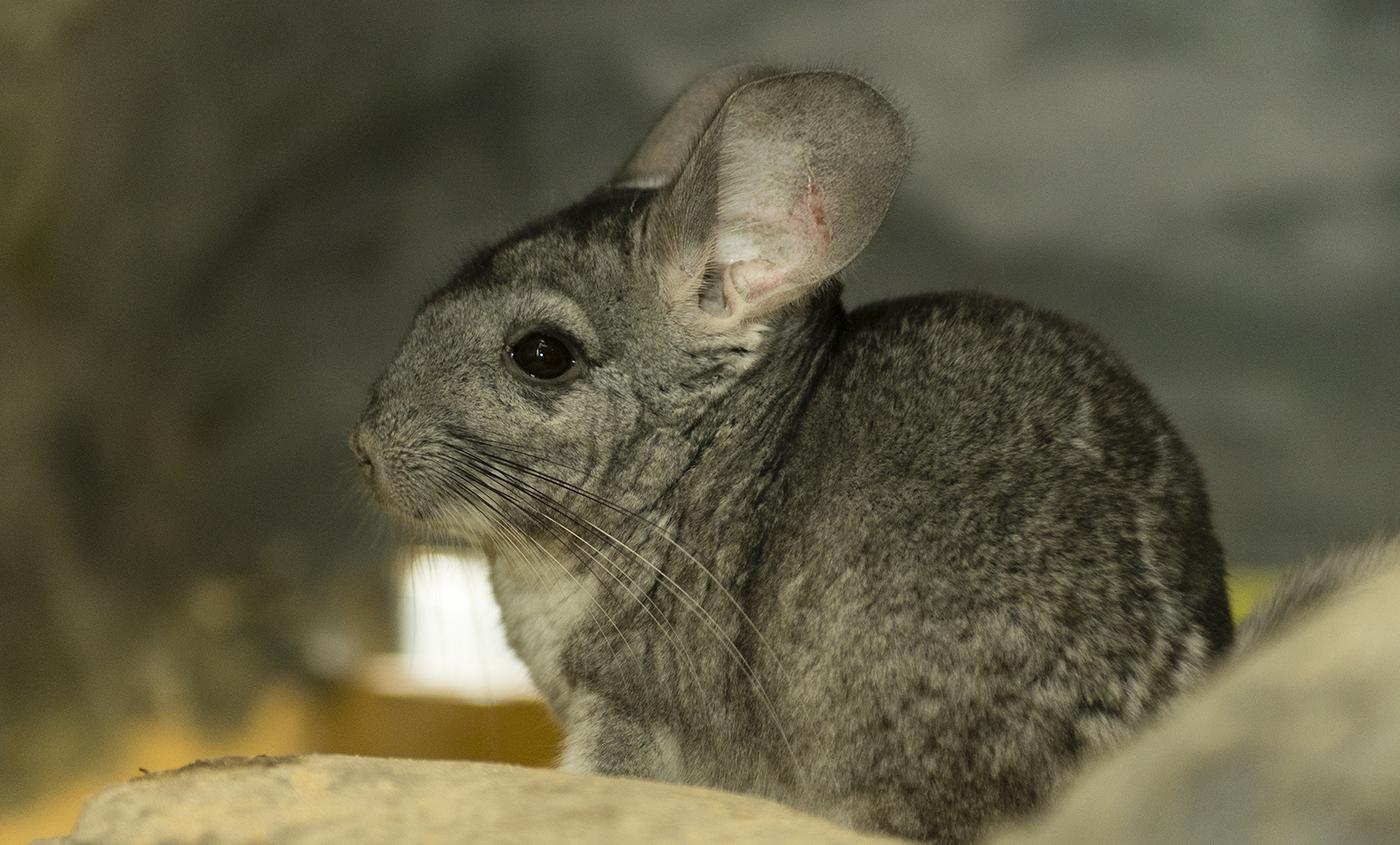
The chinchilla is a small rodent native to the Andes mountains in South America. It is known for its dense, soft fur, which has made it a target for the fur trade.
Chinchillas are social animals that live in colonies and are active at night. Their diet consists primarily of grasses, seeds, and insects.
- Region of Habitat: Andes Mountains in South America
- Scientific Name: Chinchilla spp.
- Place of Origin: South America
- Feeding Habits: Herbivorous, feeding on grasses, seeds, and insects
- What Sound They Make: Squeaks and chirps
Fun Fact: Their dense, soft fur requires regular dust baths to keep clean. Their fur is incredibly smooth and luxurious.
Final Words
As we conclude our journey through the fascinating world of animals that start with C, it’s clear that nature’s diversity is truly awe-inspiring. From the mighty cheetah to the tiny chinchilla, each creature we’ve explored has its unique story and role in the ecosystem.
These animals remind us of the importance of conservation and the need to protect our planet’s biodiversity. We hope this exploration has sparked your curiosity and deepened your appreciation for the animal kingdom.
Whether you’re drawn to the playful charm of capybaras or the mysterious allure of coelacanths, there’s always more to discover about animals, starting with C.
What’s your favorite C animal? Consider sharing this article with fellow animal enthusiasts and continue learning about these incredible creatures.

